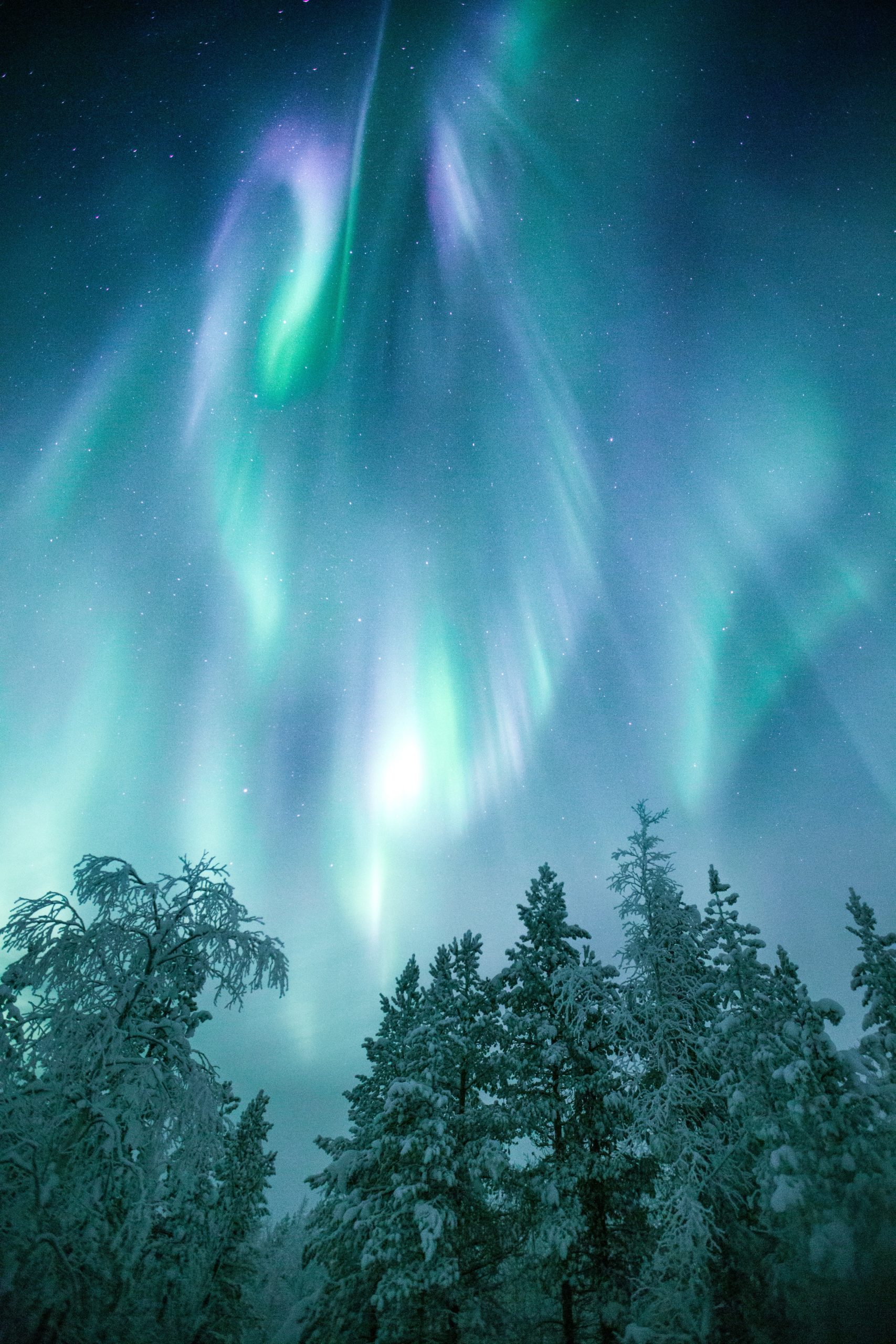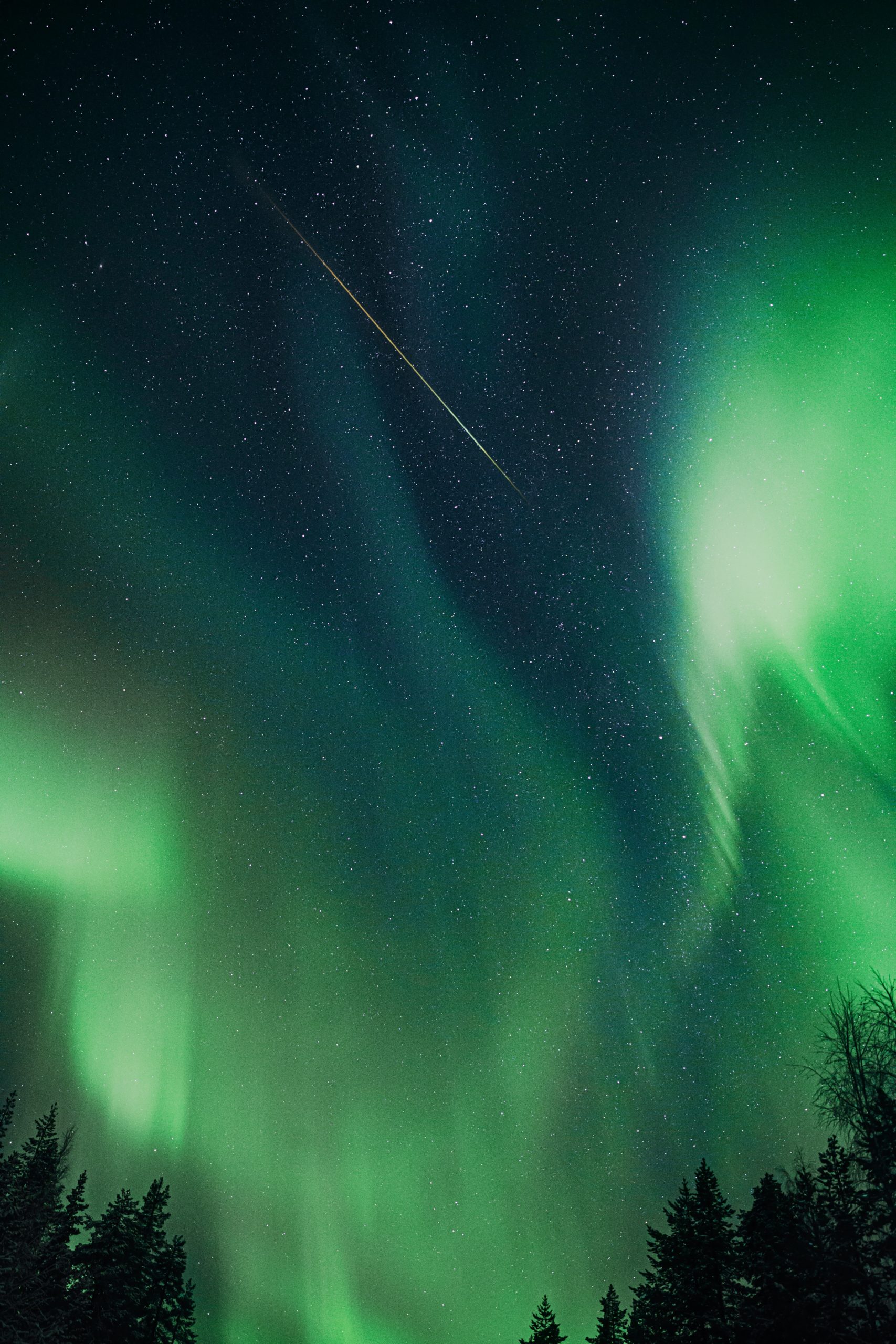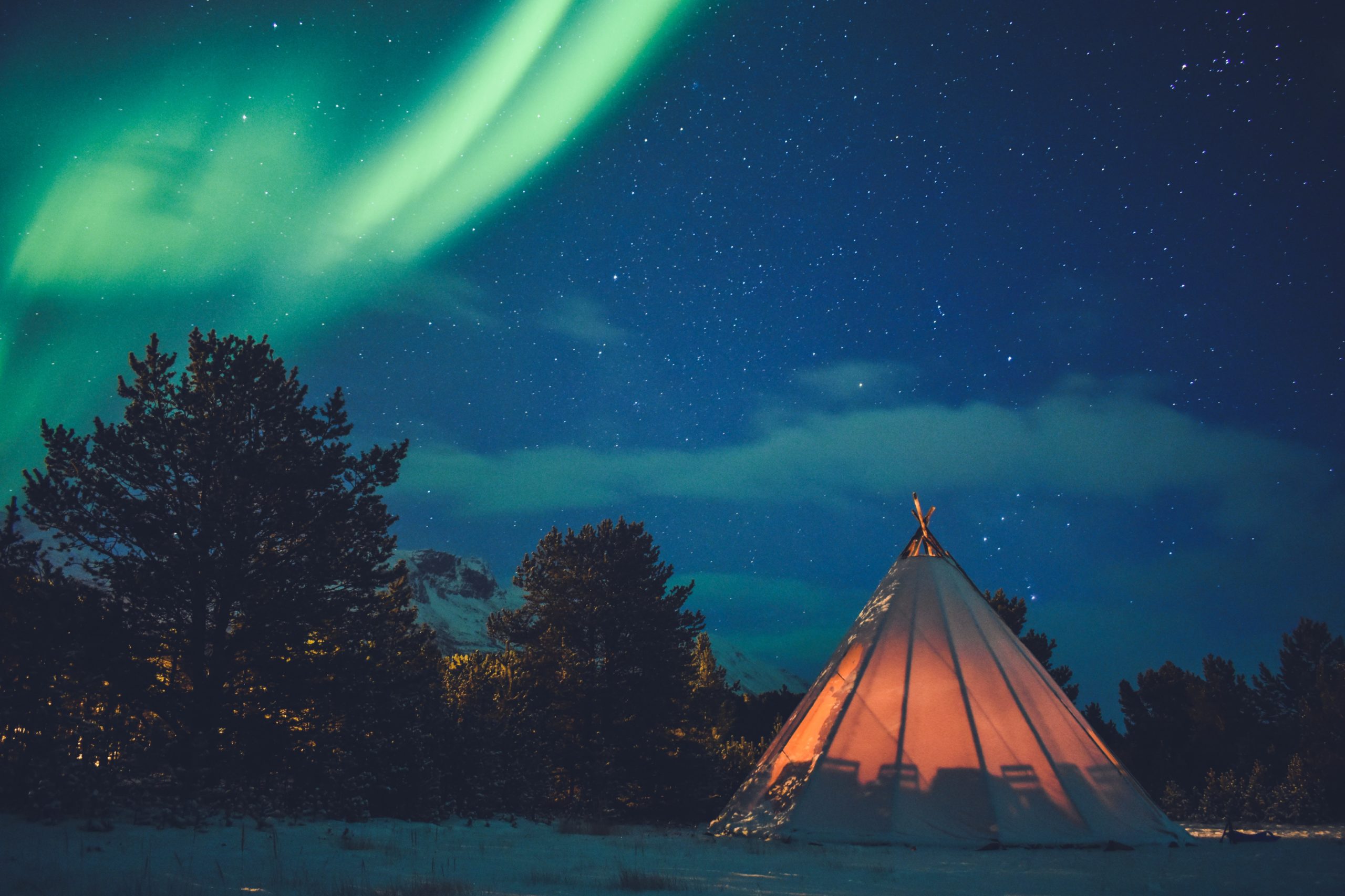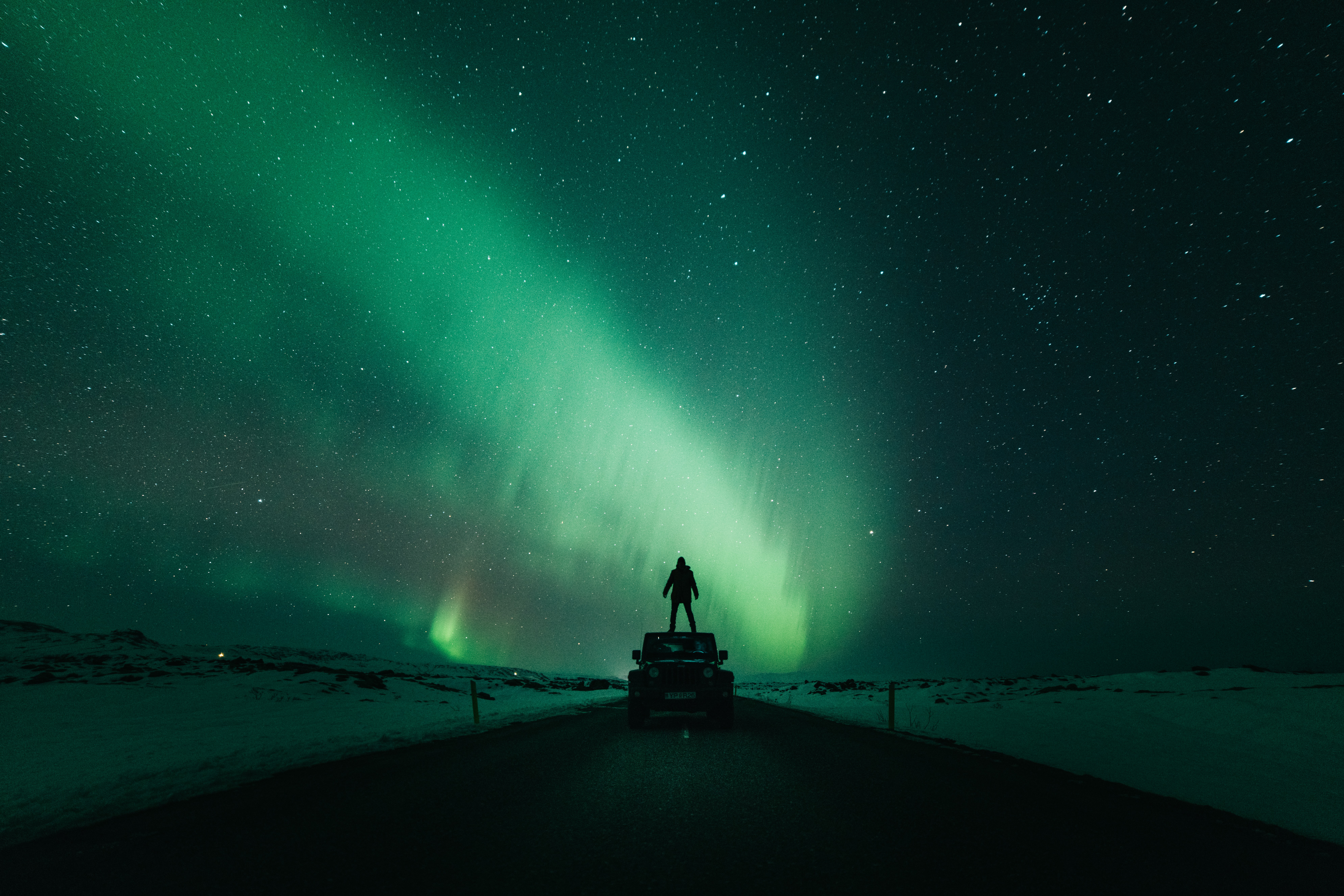Top 7 aurora trails: the best hiking in Iceland near Reykjavik
Are you in the capital looking for auroras? Here are some of our favorite paths for northern light discoveries.
Looking for the best hiking in Iceland near Reykjavik? Well, cities aren’t usually known for their outdoor activities, but Reykjavik is the epicenter of wild adventure! You can find countless things to do here, and nearly all of them pick up in town.
But what about hiking? Going for a stroll while you search the skies is a great way to get some fresh air and increase your chances away from the light pollution. Here are a few of our favorite local haunts- how many of these have you tried?
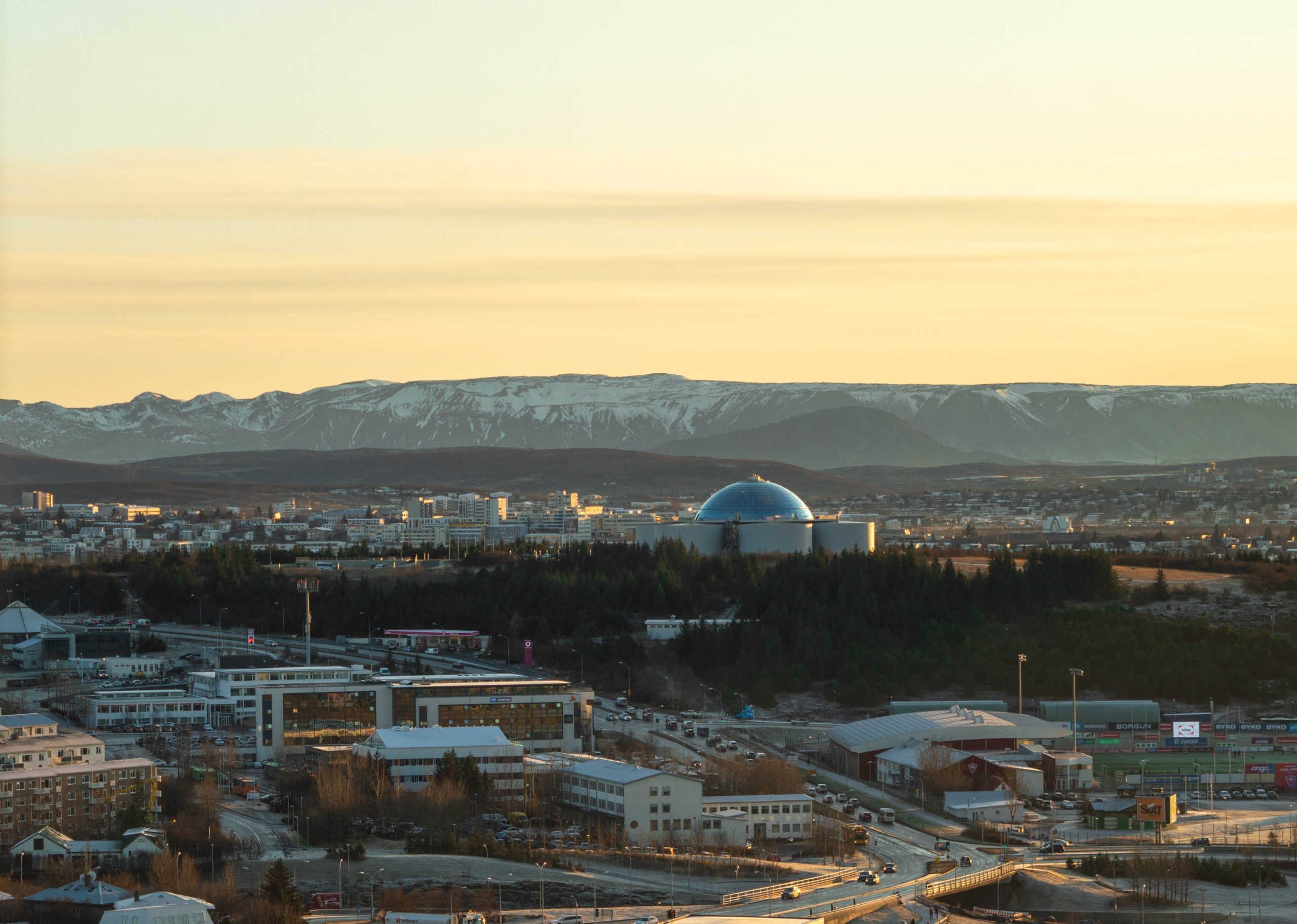
1. Öskjuhlíð: Head to the hills!
Chances are you’ve seen the glistening dome of Perlan from your window on your way into town. Or perhaps it already caught your eye on a walk around town? It is on top of one of our highest hills, after all. Perlan rests on top of an area called Öskjuhlíð.
This area is home to some of the best hiking in Iceland near Reykjavik, because not only is it directly in Reykjavik but it’s filled with charming forest paths. It’s also next to the Nauthólsvík beach, another great place to stroll or swim. (Don’t worry, it’s heated! Just.. Maybe come back after aurora season for this one.)
There are multiple trails to enjoy in Öskjuhlíð, and if you make it to the top you’re met with a sweeping view of the sparkling town below you. (You are still within the grip of city light pollution here, but on a good night, you can see past it. And it makes for great photos!)
Easily accessible on foot or by public transport from most of town, the paths here lead on to many of our other favorite Reyjavik walks- including the coastal road to the Grótta lighthouse, Fossvogur, and Elliðaárdalur, all the way down to the red rocks of Heiðmörk. No matter what time you visit, a walk in Reykjavik’s local forest is a beautiful experience.
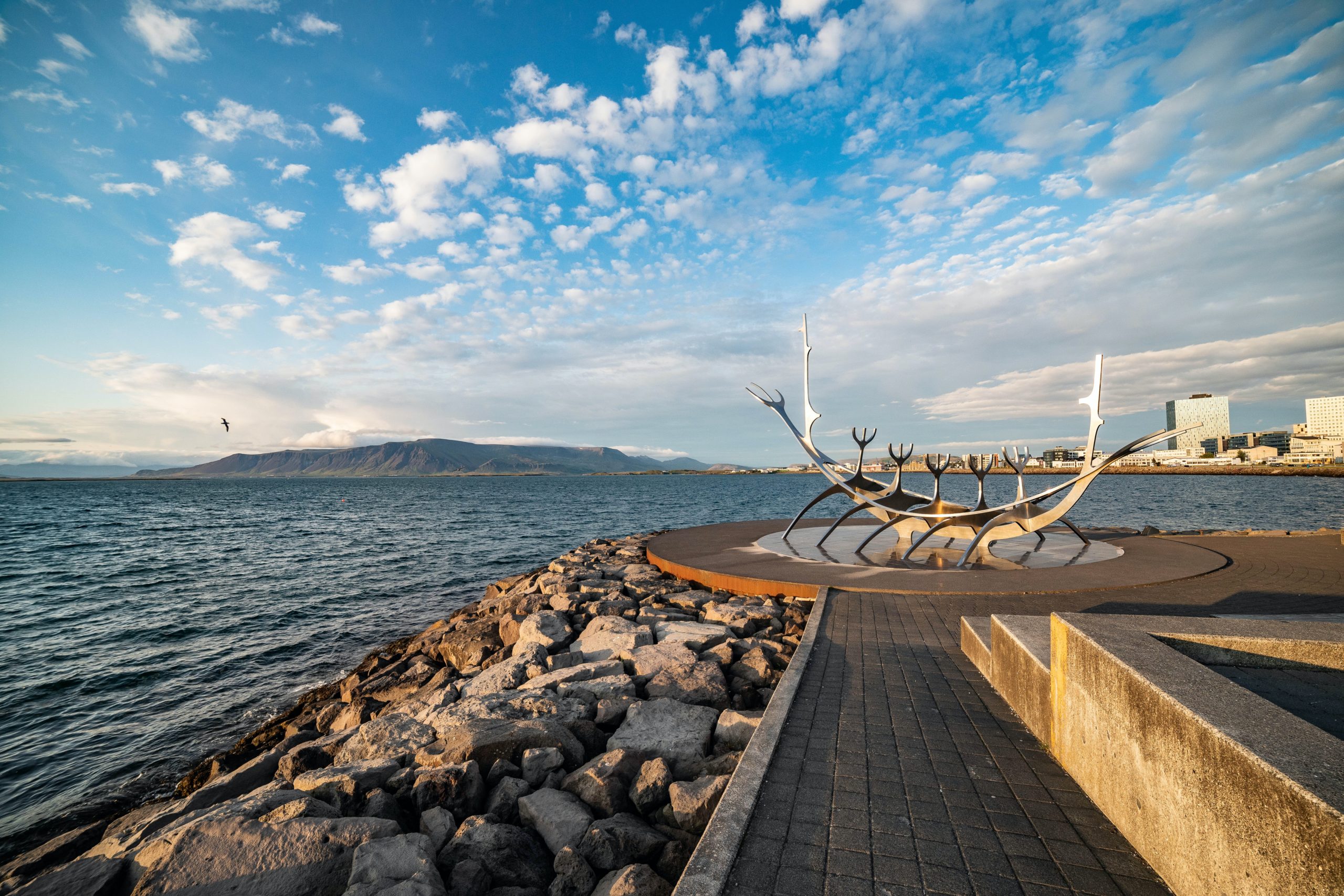
2. The Coastline path from Hafnarfjörður to Mosfellsbær
The wide arms of the capital region don’t stop at Reykjavik. They include the towns of Hafnarfjörður in the south and Mosfellsbær in the north. Nestled along the jagged coast, you can walk to and from all of these places using the Blá lykilleið (Blue main path), also known as the Strandleið (Coastline) walk.
You can ride or bike all the way to either end. While it might take you a while to complete, this connection gives you a huge amount of coastal path to tread. Depending on the cloud cover, you’ll find people populating the Reykjavik half of it often as they set cameras up for some aurora watching.
Looking towards Esja gives you a dark northerly view over the water, and helps to cancel out some of the city light. The further away from town that you go, the darker it’s likely to get- so an evening walk on these fine paved city paths may be a great spot for you.
You can see the lay of the walk here, and look at all the other options! This might not be the first thing you think of when you envision trekking, but after you’ve enjoyed it once you’ll see why we’re calling it some of the best hiking in Iceland near Reykjavik.
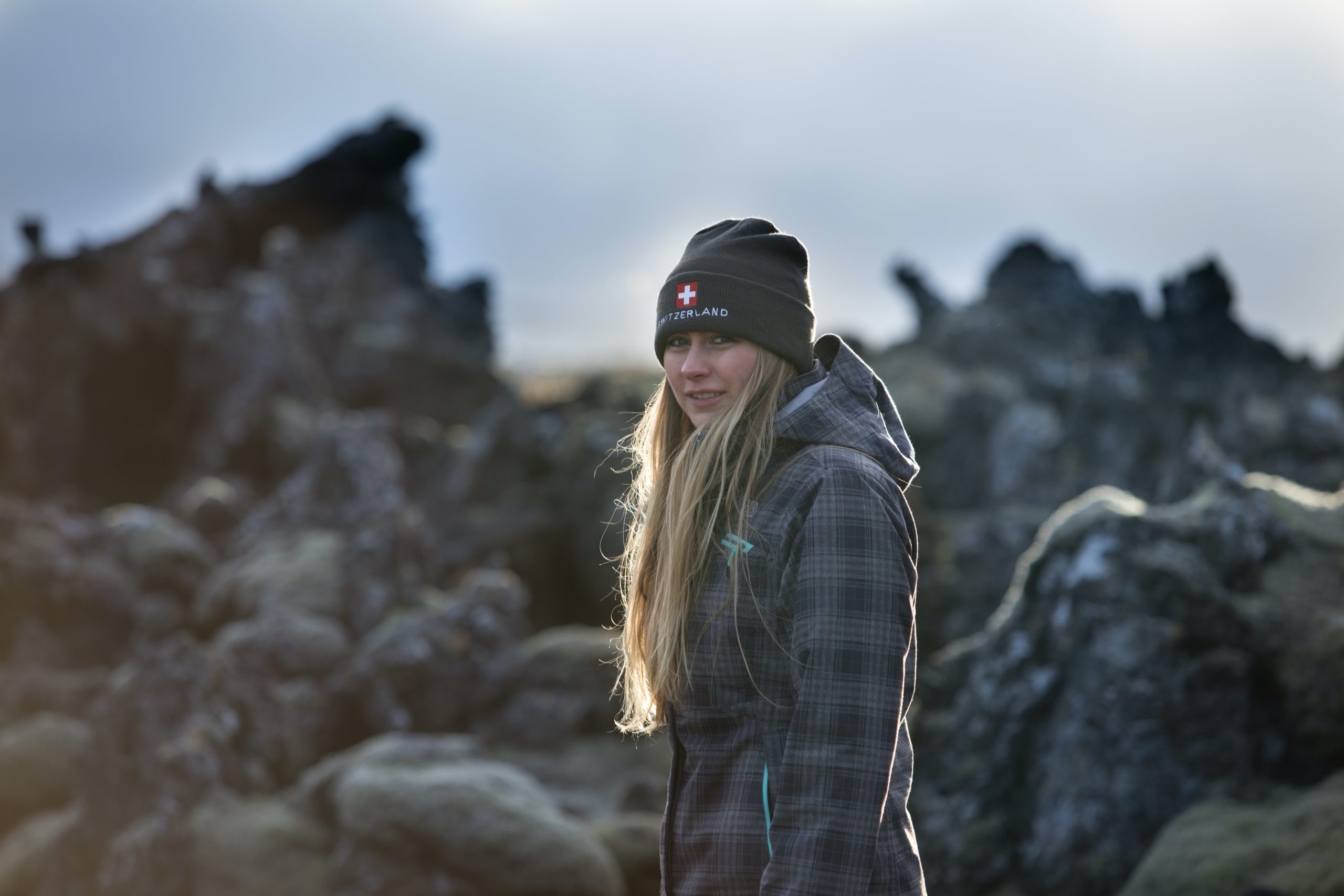
3. The red hills of Heiðmörk
The nature reserve of Heiðmörk is a constantly evolving treasure of the city, and arguably some of the best hiking in Iceland near Reykjavik. Heiðmörk is a large area that actually encompasses some of our other favorite spots, so you’ll want to check out a map to see all of it quickly.
The city has been busy in Heiðmörk over recent years and has maintained and created multiple trails, recreation areas, and even some camping grounds. And the wonders here are countless.
From its moss-covered lava fields to the nearly Martian Rauðhólar pseudocraters, to the Christmas tree forest at Holmsheiði, this is an area that you’ll need a lot of time to discover. Because of its location on the edge of town, Heiðmörk is an ideal tangle of trails that you can walk in search of the lights.
The paths here are well cared for and fairly simple difficulty wise, so it’s a good spot for adventurers of varying abilities. It’s also accessible by local bus! But before you go, double check the schedule to make sure you know the time of the last ride out. It’s a long walk back into the city center!
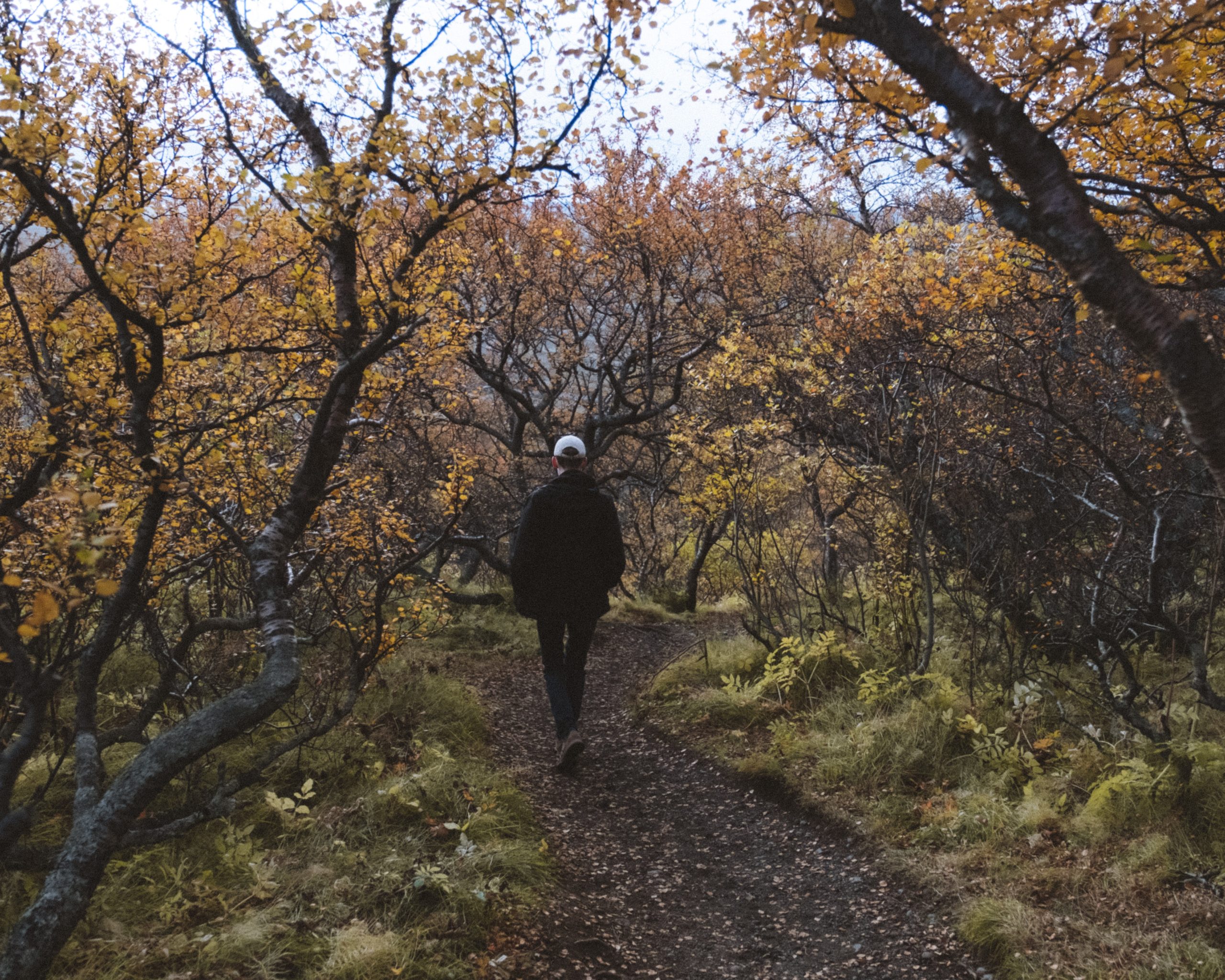
4. Elliðaárdalur: A city oasis
While hunting for the best hiking in Iceland near Reykjavik, you are likely to hear about the Elliðaárdalur valley. Elliðaárdalur is a lush green space tucked away in the city, cradling the protected Elliðaár river.
After walking the concrete streets and paths of Reykjavik, Elliðaárdalur is like a rare portal into a fairy world. Punctuated by recreational trails and tiny waterfalls, Elliðaárdalur is home to a surprising amount of wildlife.
Watch out for all the mink and rabbits who call this place home, as you will likely see some on your journey. (And keep an eye out for salmon! They populate this crystal clear river, making it an important fishing spot close to town.)
This area is connected to many other green spaces and is great for pedestrian adventuring. You can link up to other walking and cyclings paths through Fossvogsdalur, and even as far as Heiðmörk.
Elliðaárdalur borders many popular Reykjavik neighborhoods and is a great spot to visit if you happen to be spending most of your time in town, but still want to get a glimpse of Icelandic nature.
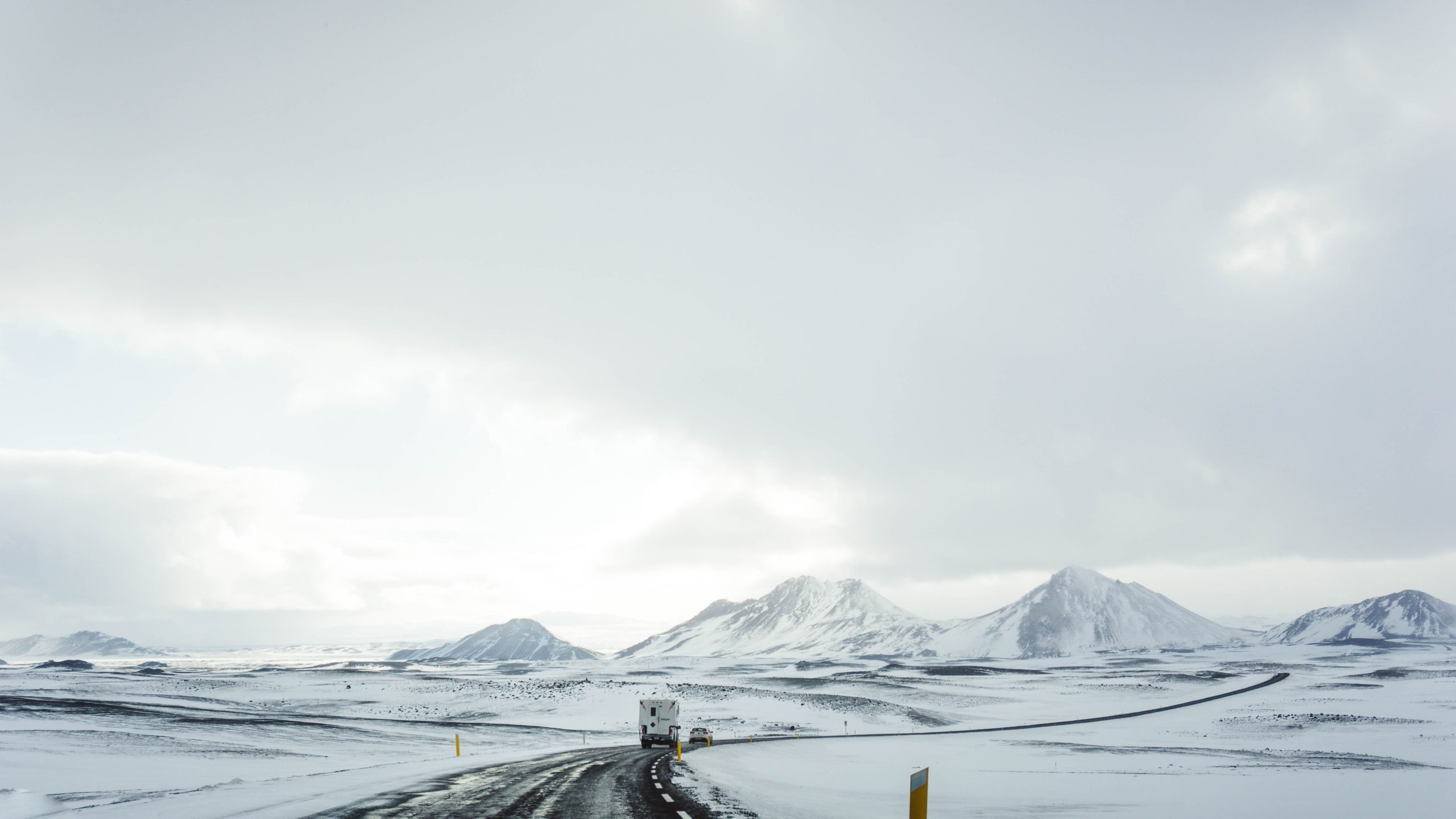
5. Vífilsfell and the Blue Mounatins
Vífilsfell is a possible option for those that have wheels and are used to winter trekking. There are many mountain paths that are popular hiking in the capital area that we’ve left off of this list, primarily because they are maybe not the easiest options for nighttime winter adventuring.
Vífilsfell on the other hand is a gorgeous choice if you’re surefooted and looking for some big views outside of the immediate grasp of town. Nestled within the Bláfjöll (Blue Mountains), this area is popular for trekkers and winter sport enthusiasts alike.
The road up to the Bláfjöll ski area passes right by, and other trails in the area populate the zone as well. This is a quiet part of town just off the route 1 highway, so you may want to save this trek for a time that you have access to a vehicle.
And don’t fret! If you’re not feeling up to a mountain hike, this is a great spot just for hanging out or checking out the slopes. The best hiking in Iceland near Reykjavik doesn’t even require hiking, you can see it just fine from the parking lot at Litla Kaffistofan across the street.
Even if you only drive through Bláfjöll on your aurora hunt, it’s worth it just to see the sudden majesty of snow-covered volcanic peaks rising out of the earth right after exiting the glowing city. The peace here is vast, colorful, and lonely- and a great first look at the wild country beyond the manicured city streets.
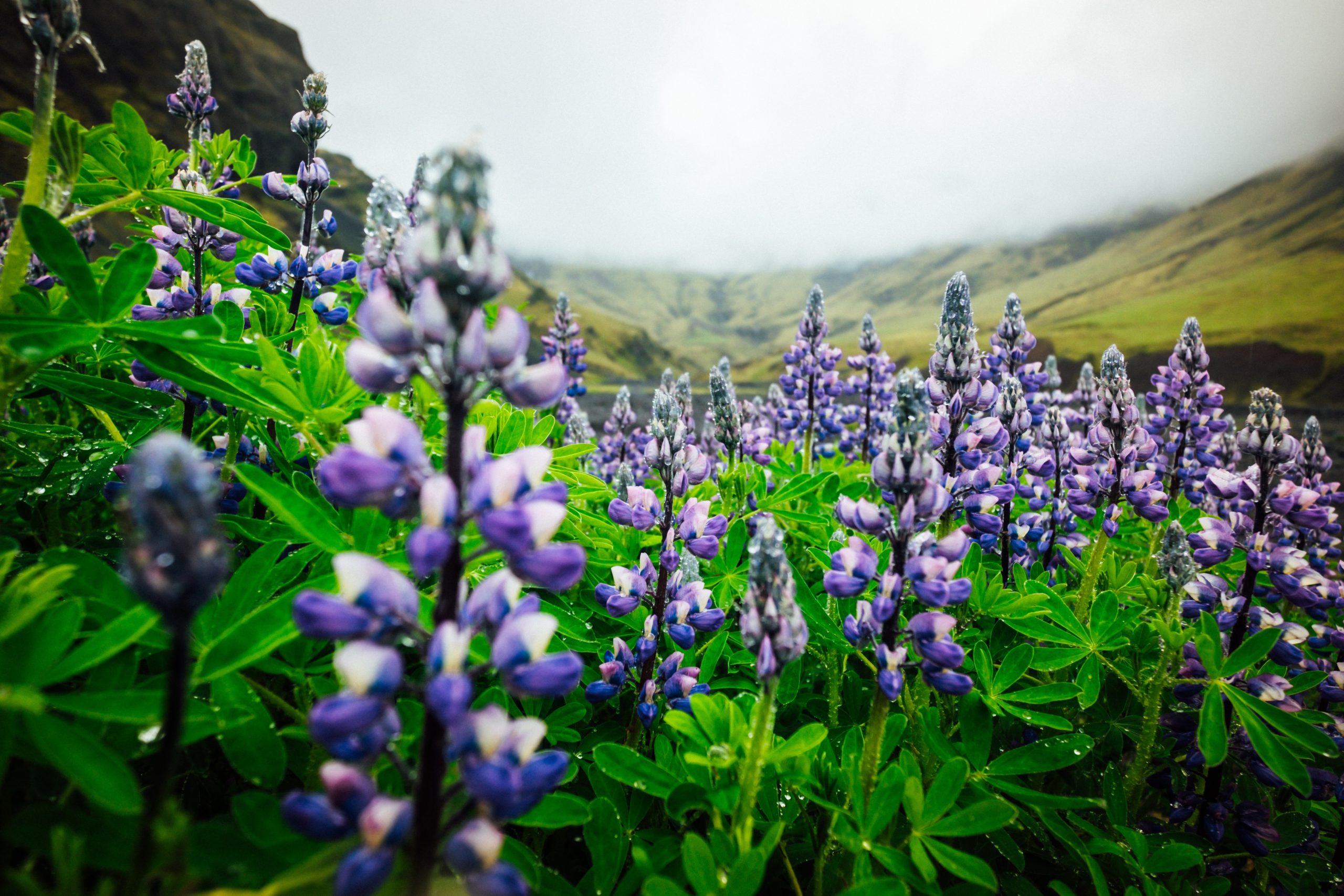
6. Grafarholt and Úlfarsárdalur in the shadow of Úlfar’s Mountain
Another hidden-away escape are the vast meadows of Grafarholt and Úlfarsárdalur, peacefully wrapped around the mountain Úlfarsfell. This is a residential area and outdoor recreational spot just north of the quiet neighborhood of Grafarholt.
In the summer, this place is absolutely flush with purple lupin flowers and gentle meadow grasses- at least, in between the sprawling lava fields. Curled around the river Úlfarsá, this is another place where you’ll find copious bird life and salmon. (And maybe even a few horses! Many of them call this area home.)
The trails in this area are family-friendly and accessible, and you can access this zone via public transport. If you’re looking for a bit more of a challenge, Úlfarsfell is likely one of the more reasonable winter mountain hikes available. (..You guessed it! We’re going so far as to call it one of the best hiking in Iceland near Reykjavik!)
In all seriousness, the highest point on Úlfarsfell is around 307 m. (1007 ft.) and is accessible via a fairly even and wide path. There are great views of Reykjavik and the sea from the summit, and it only takes around 2.5 hours to complete. As far as vistas go, this is a great place to catch the lights, and you are likely to have the whole thing to yourself.
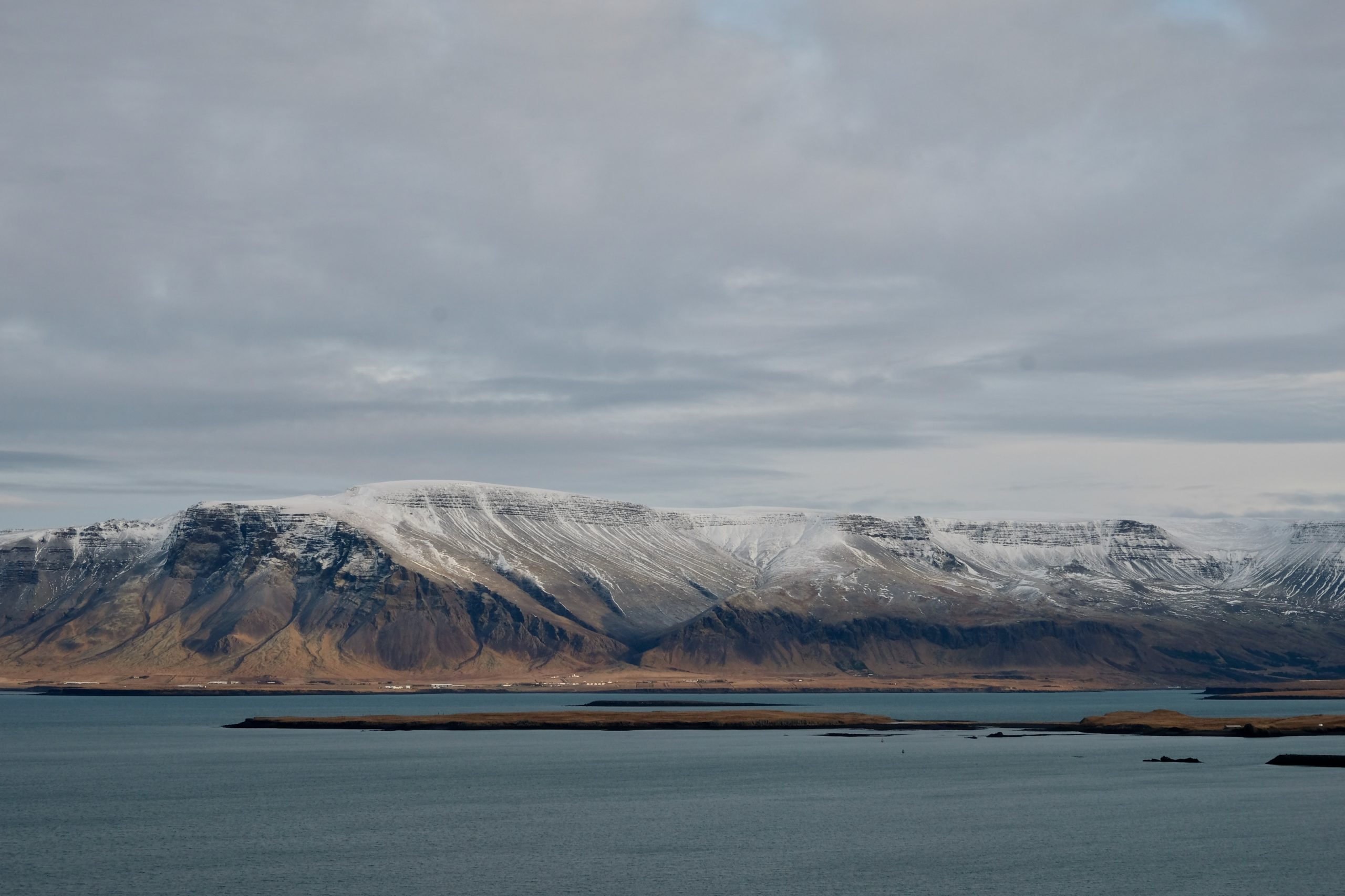
TIP: This mountain is near Esja, one of Reykjavik’s most famous landmarks. It goes without saying that Esja is some of the best hiking in Iceland near Reykjavik, but it is also some of the most challenging.
While these paths are steep in good conditions, braving them at night in high winter is not recommended for most trekkers. You can try for an Esja hike in the autumn, but otherwise, seeing her from nearby Úlfarsfell is a great compromise.
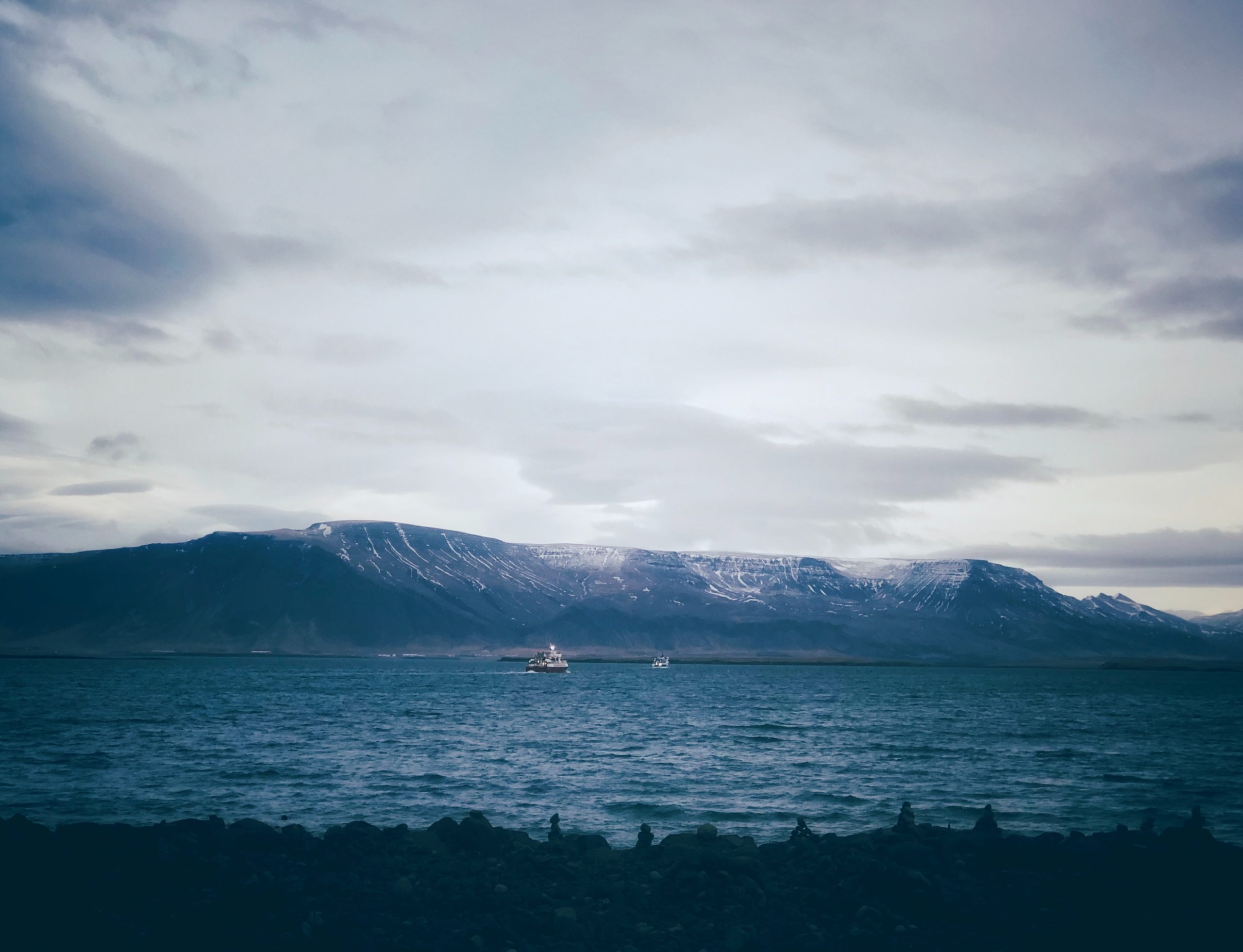
7. Viðey: The island’s island
Looking for an island getaway from your island getaway? You’ll be hard-pressed to find a closer option than nearby Viðey. Once the home of a monastery, Viðey is the home of Yoko Ono’s Imagine Peace Tower, and countless trails.
There is a lot of history on this little island, and some of the oldest rock in the Reykjavik area. In fact, nearly 2 million years ago, it was a volcano! (Considering where we are, this may not come as much of a surprise to you.)
These days, however, we have to say it’s some of the best hiking in Iceland near Reykjavik, not to mention one of the most exclusive city spots to watch the northern lights. But how does one get there?
In the summertime, the ferry runs pretty regularly. But in the wintertime, the ferry only runs from the harbor Skarfabakki on weekends. There are however aurora boat tours available that can land on Viðey for a portion of the tour, giving you a chance to grab some solid ground to plant your tripod in for a lucky northern lights shot.
However you manage to get there, hopefully, you’ll get to take advantage of some of these historical trails. This place has seen and housed invaders, paupers, politicians, farmers, and more puffins than you’d expect. But today, it is protected and allowed to finally thrive. A true shoo-in for the best hiking in Iceland near Reykjavik.
Beautiful Northern Lights...and 10 important safety tips to remember while you look for them
Do you know how to keep safe while you chase the beautiful northern lights?
We all know how beautiful northern lights are, but what about how to stay safe while we look for them?
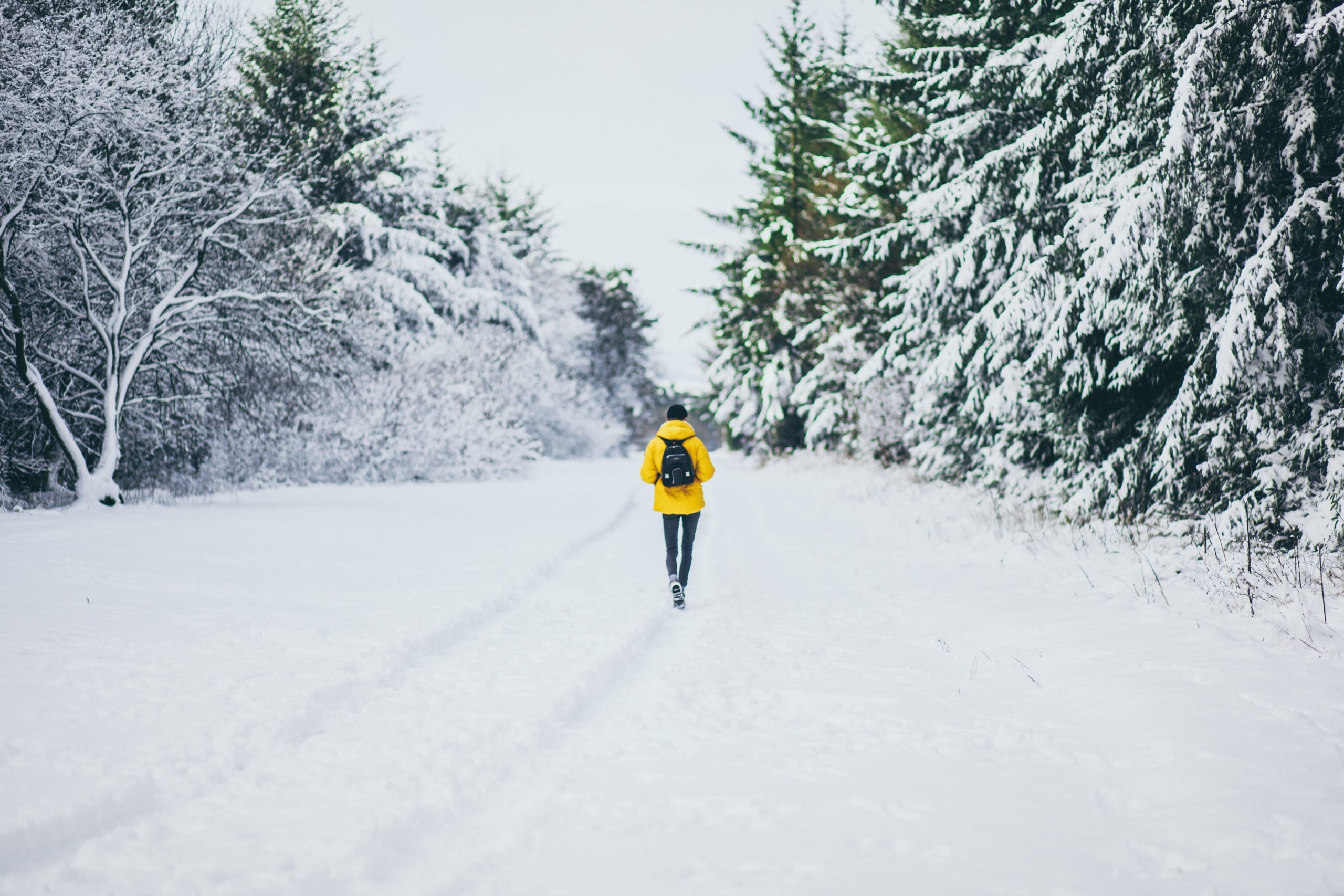
1. Dress for the hunt
Dressing in layers is key for surviving Icelandic weather. Because of the Gulfstream, the climate in Iceland can be surprisingly moderate- but because of its North Atlantic location, that moderate climate can include some quickly changing weather conditions. In order to manage the unpredictability of weather or temperature, you might need a few layers of clothing.
This can help you regulate between inside and outside temperatures quickly, and can give you that extra warmth you might need to stay outside hunting just a little bit longer. The temperature might not be astronomical, but it can add up if you’re out for a few hours.
If you can swing it, try adding a waterproof layer to your collection. This could be waterproof pants for maneuvering in snow or even a waterproof top layer. In the autumn months when there’s a lot of rain, this kind of coverage could be key to enjoying the evening.
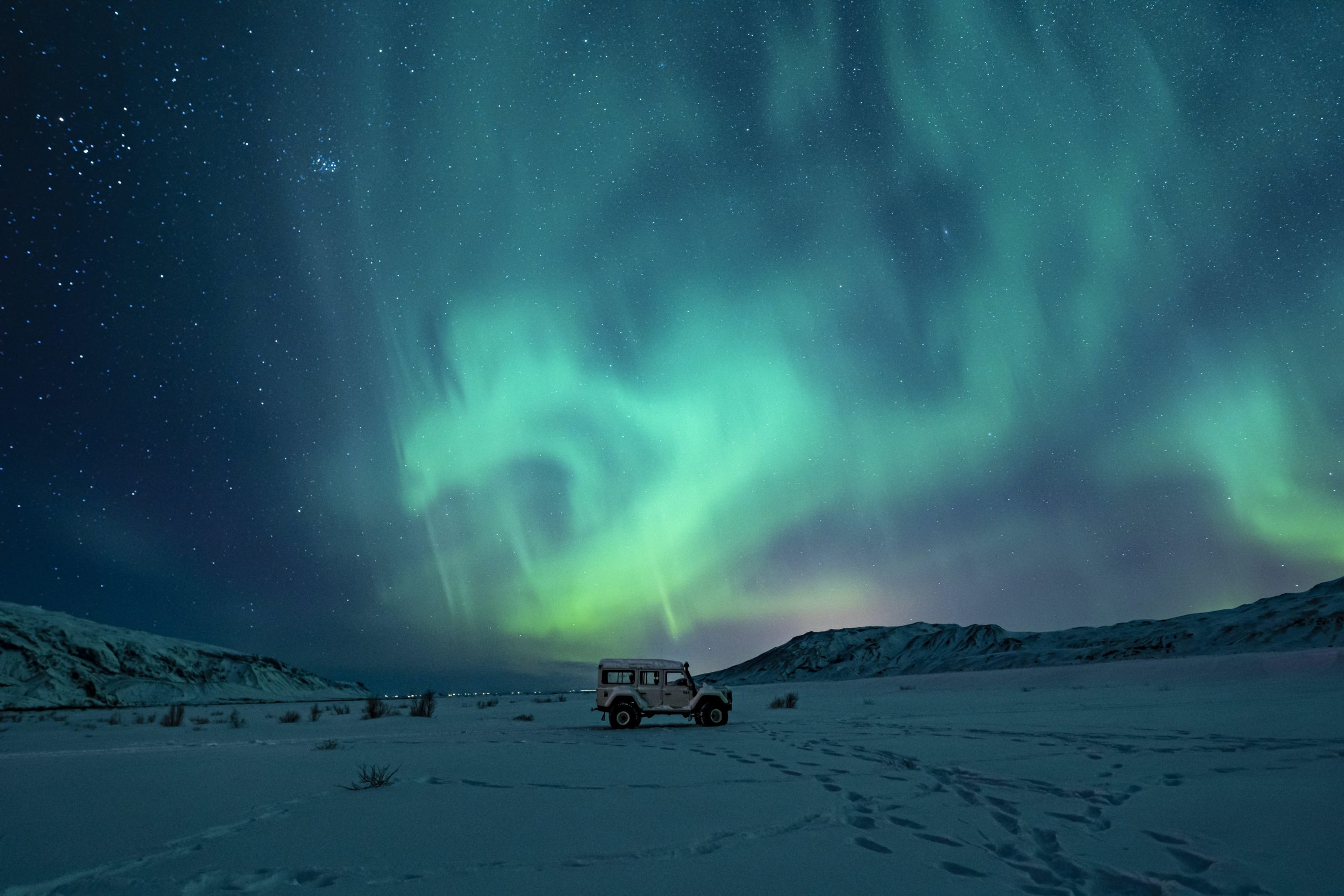
2. Be careful where (and how) you park your vehicle
The first point of this tip is to never park on the road. We don’t need to elaborate on that, because no version of it should be on the table. The roads in Iceland are typically narrow and do not always have a shoulder, so it is not recommended to attempt a pullover for the sake of those beautiful northern lights.
Many of these roads are somewhat raised and have a sloped edge that cannot always be easily seen in the dark. This and other obstacles like lava fields can be easily hidden by accumulated snowfall.
Nighttime driving is difficult under the best conditions, so keeping an eye on the weather, visibility, and the other speedy travelers that you’re sharing the road with is enough pressure already.
If you’ve seen the lights from your window, don’t panic! Though it may be a sacrifice for the driver, the passengers in your car can still snap a shot or two while you search for a safe place to pull over. This could be a designated observation point, a parking lot, a safe place off of the main road.
Try to be respectful of private property, and avoid opening any gates that you may come across. These gates are often keeping livestock from straying onto the road, which is a good reminder for us as well. The beautiful northern lights may be calling… But never let them lead you into the road.
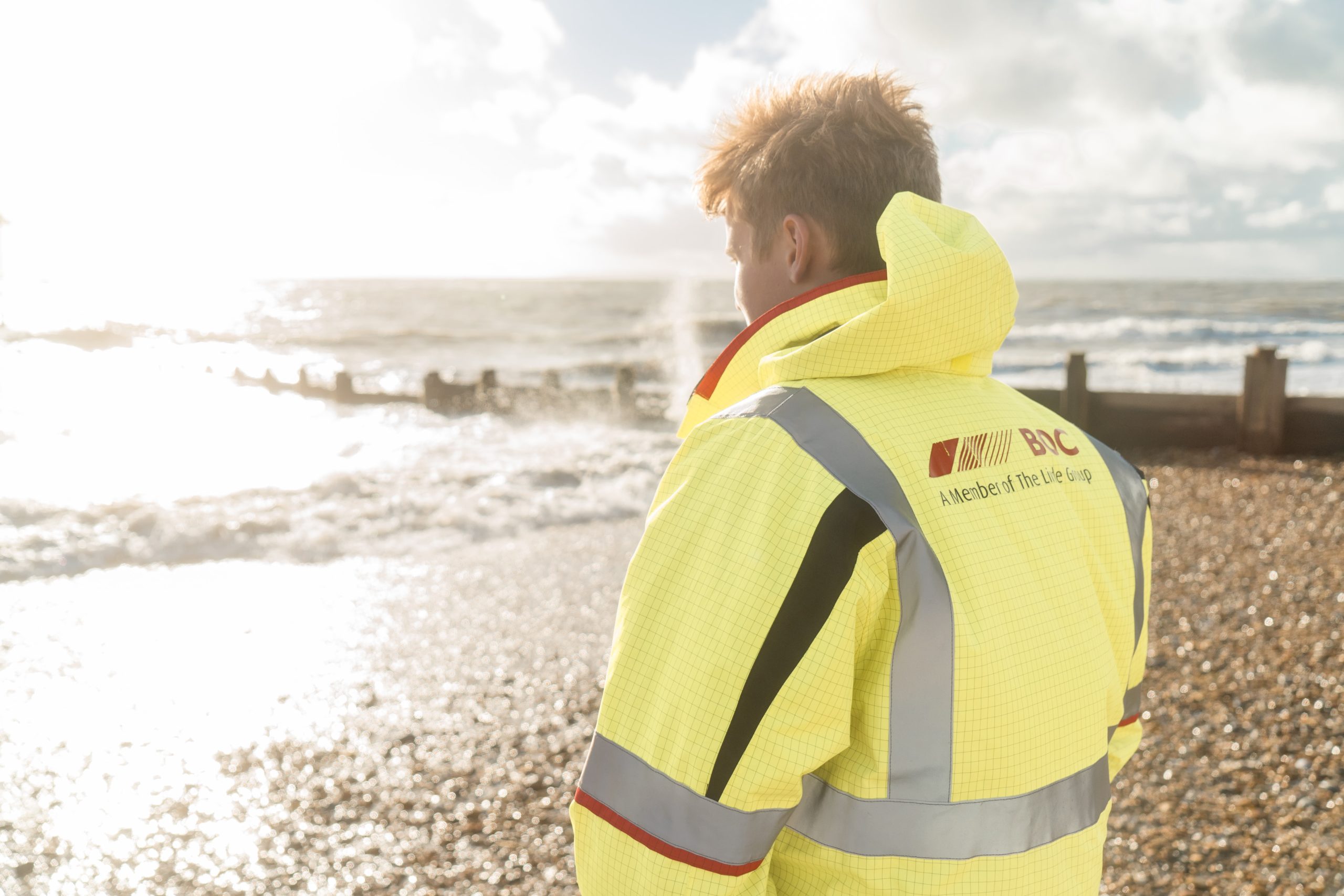
3. Try reflectors!
If you’re local, you probably already have one somewhere on your person. They can be painted onto your clothes, clipped to your zipper, or even taped onto your gear. Reflectors come in a variety of applications, and there’s one for everyone.
Iceland is dark for a large part of the year (which is why we get to see the beautiful northern lights), so reflectors are a popular accessory here. They can help you maintain some visibility in the dark, which could help a group leader to keep track of you, or help a motorist see you from further away.
If you don’t have one, these can often be picked up in gas stations, outdoor gear shops, and even souvenir shops. Look for a fun one that you can use as a zipper pull!
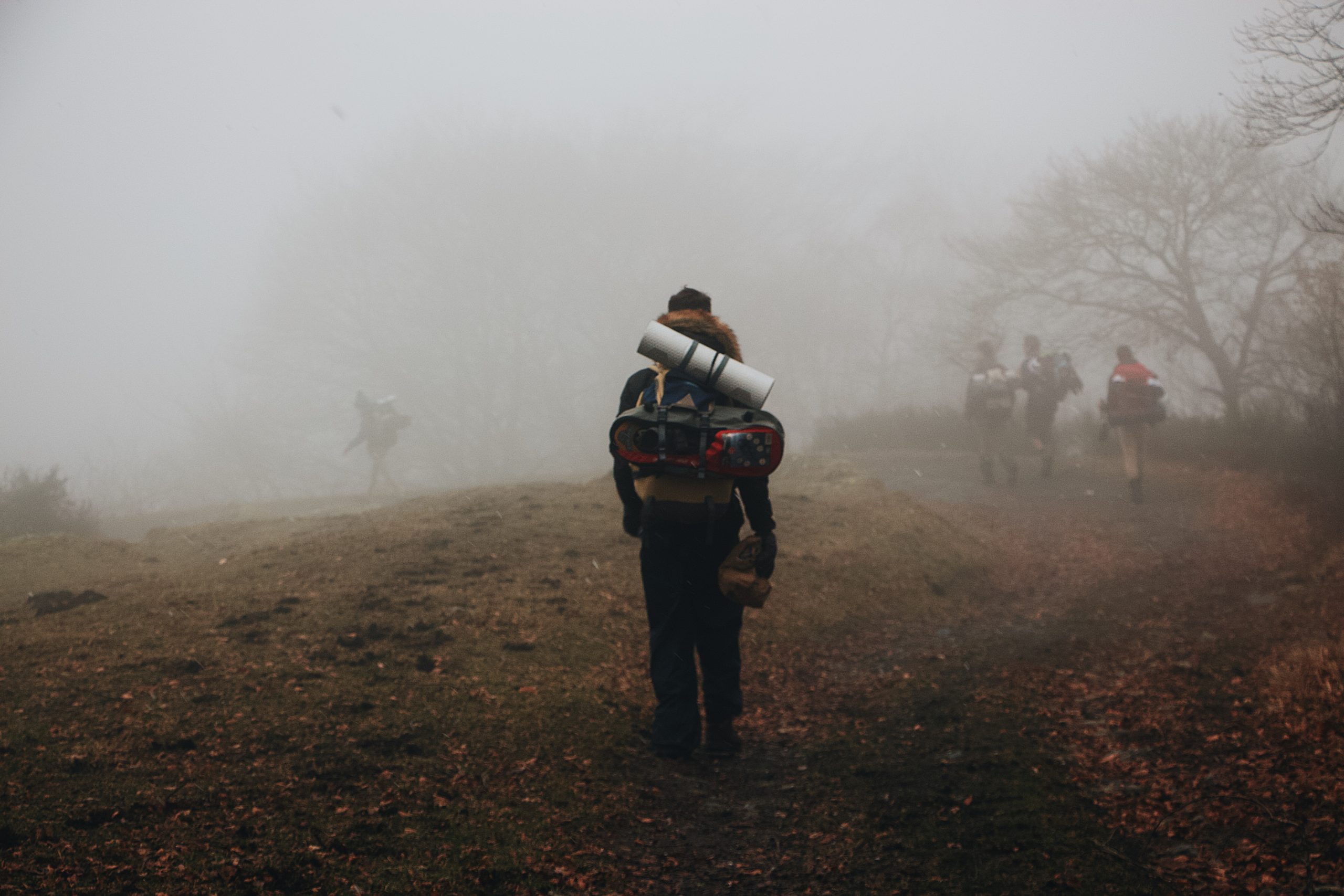
4. Tell someone where you're headed
This is a safety tip that you should use no matter where in the world you’re adventuring! If you can’t tell a friend where you’re going (because they’re coming too!), you can submit a travel plan to websites like SafeTravel.is.
If you’re headed out into the wilds looking for beautiful northern lights, you can also rent a Personal Location Beacon (PLB) from them as well, should you need it. These types of precautions may seem extreme, but it is always good to be prepared.
Simple trips can meet with surprise conditions, and it’s better to not need your extra planning than to wish you’d done it.
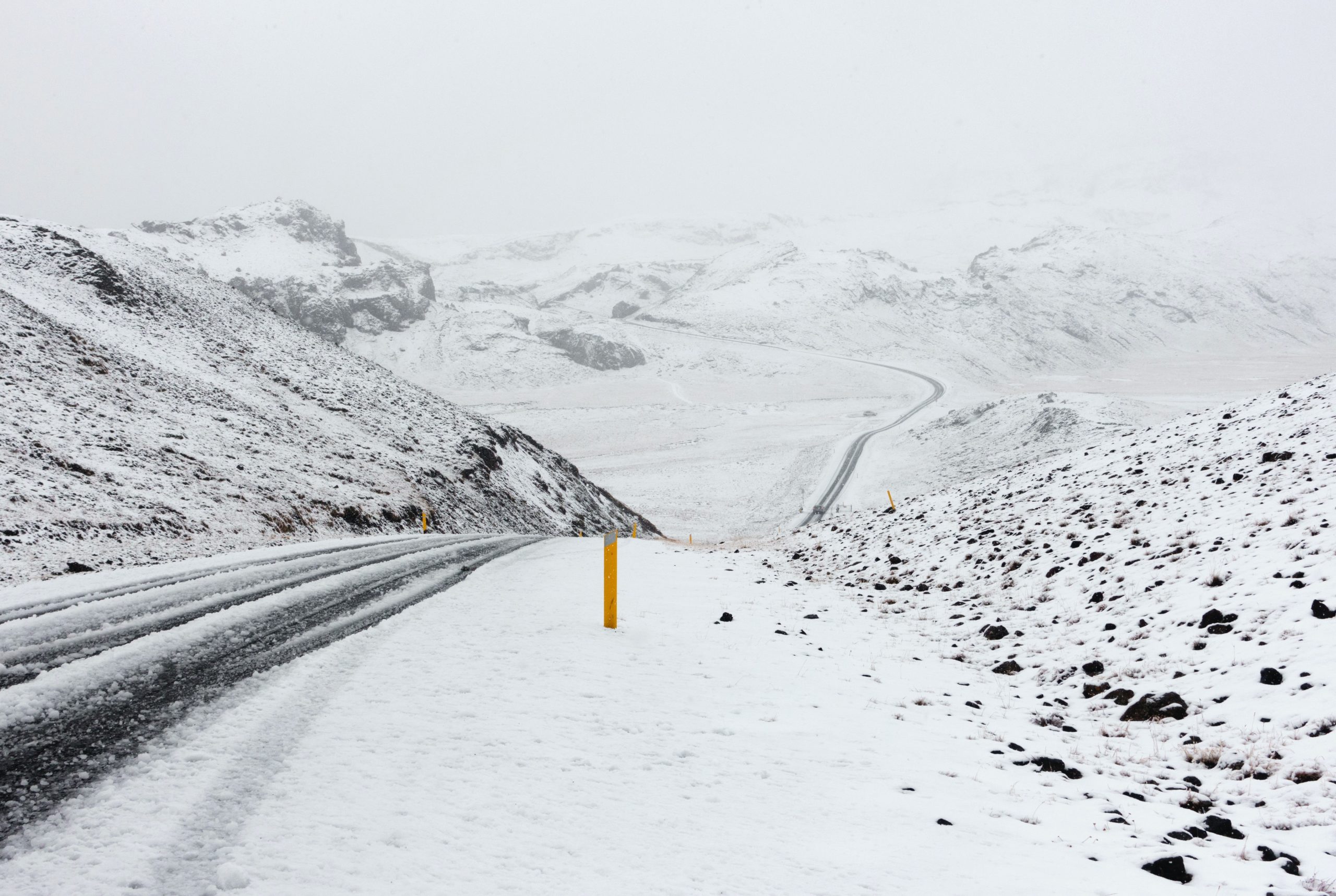
5. Check the conditions before you go
We may have mentioned this a few times already, but conditions in Iceland change fast. It’s hard to fully understand the weight of that statement until you’ve experienced it a few times, so this might have to be a point that you deposit some trust on.
Iceland’s lonely location in the North Atlantic means that we can be at the receiving end of low-pressure systems, incredible winds, and swiftly moving storms. There’s a lot of precipitation, and lots of domestic concerns like seismic activity, avalanches, and more.
You can’t predict all of it, but you can educate yourself and stay on top of the predictions by checking sites like vedur.is and safetravel.is. These websites can not only keep you safe, but they can also make you aware of new alerts and help you find those beautiful northern lights that you’re after.
Know the season that you’re visiting in, and be aware of the types of weather that most commonly happen within them. Being ready can help you decide how to proceed in a dicey situation.
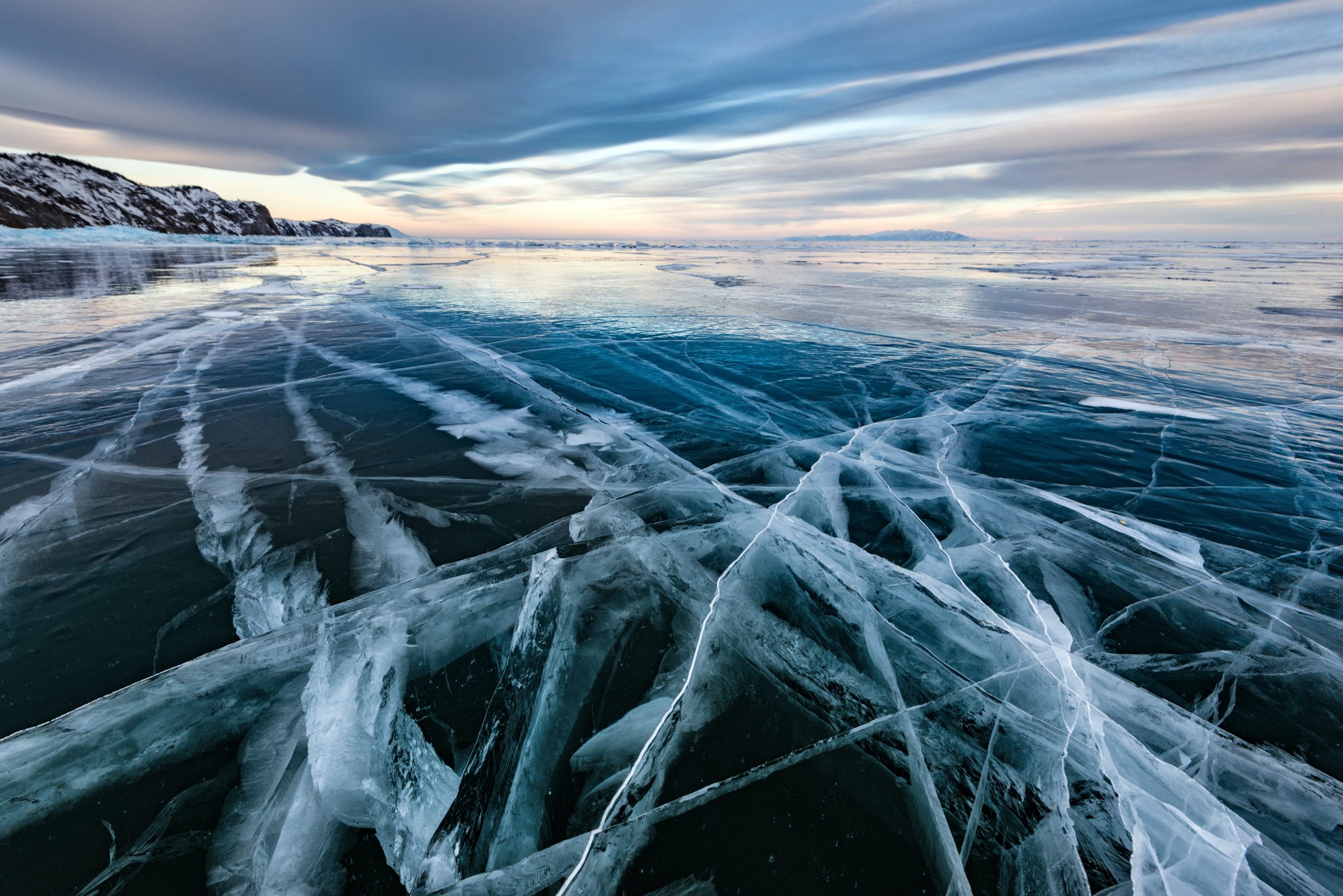
6. Learn how to walk on ice
This is less of a requirement and more of a reminder to be aware of your surroundings. In the colder months, the temperature can fluctuate throughout the day. This means that Iceland is a great spot for producing ice. (Surprising, I know.)
If there’s one thing people usually aren’t doing when hunting the beautiful northern lights, it’s usually looking at the ground in the dark. Falling on ice is a big concern in these colder months, and it goes without saying that it’s an important safety tip to remember.
You can stay upright by looking where you’re going, paying attention to how you’re walking, and protecting yourself with gear. This can mean smaller steps, keeping your weight centered above your feet (less diagonal weight-bearing with long strokes or leaning), and maybe trying out a pair of shoe spikes.
Shops throughout Iceland carry different shoe attachments for this purpose, but you will likely find them at home too. When in doubt, however, look at penguins! They seem to have mastered the technique with their upright shuffle.
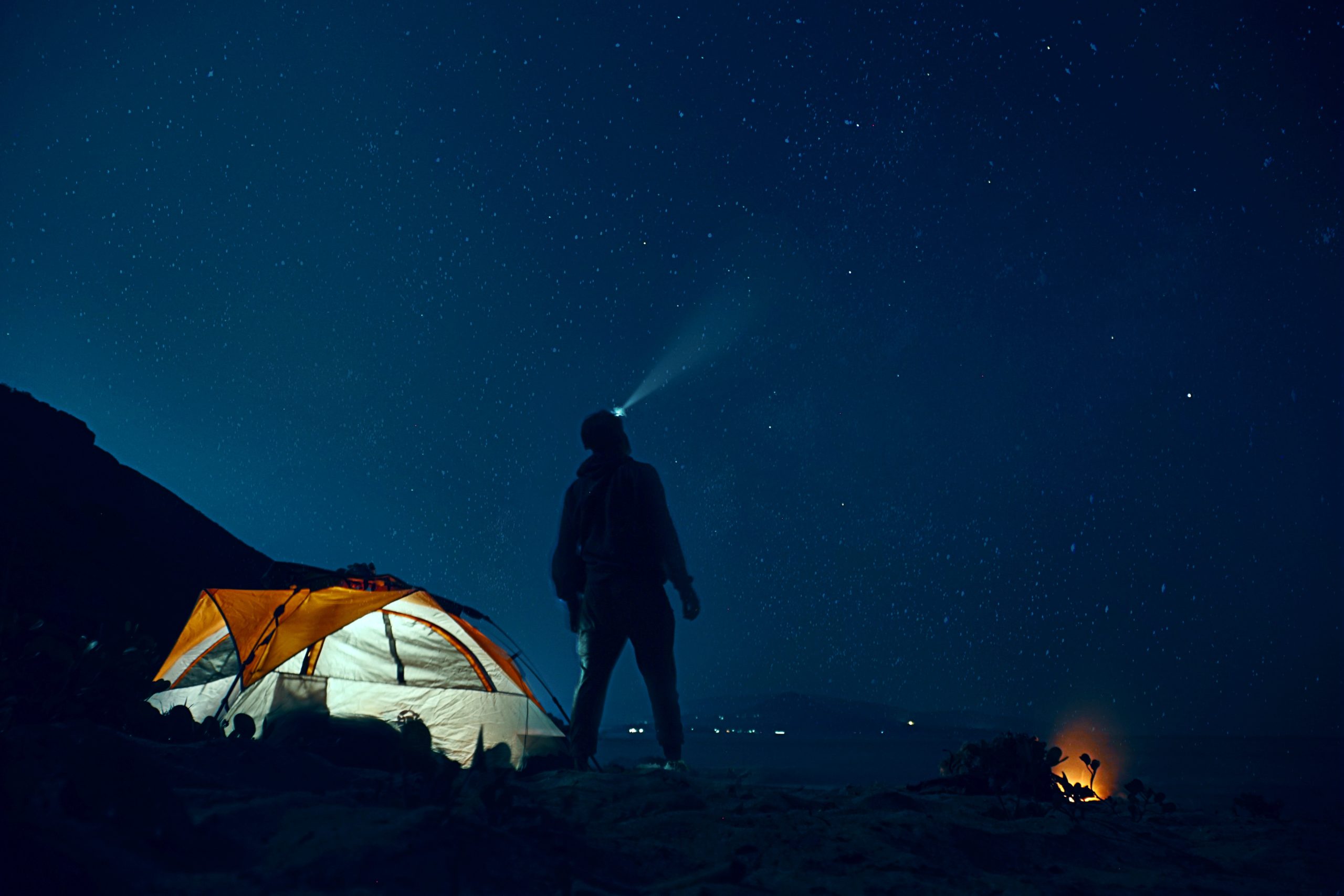
7. Bring your own light
Don’t forget your gear! Safety tips are one thing, but being well prepared is another. Depending on where you are going and what you’re doing, you will need to pack different things. Typically for nighttime activities, the biggest recommendation is a torch or headlamp.
You may also want to make sure that you have charged your communication devices and cameras, and that you are outfitted to stay warm outside. This means hand, ear, and head coverings if possible. If you are headed out into the wilds, you may want to consider a satellite phone or a Personal Location Beacon.
Organize and check all of your gear before you head out, to make sure that everything is functioning properly, and that you don’t forget anything. Oh! And don’t forget snacks! Even if you’re just out for the night, an aurora hunt is hungry work and you might not find many restaurants open after midnight.
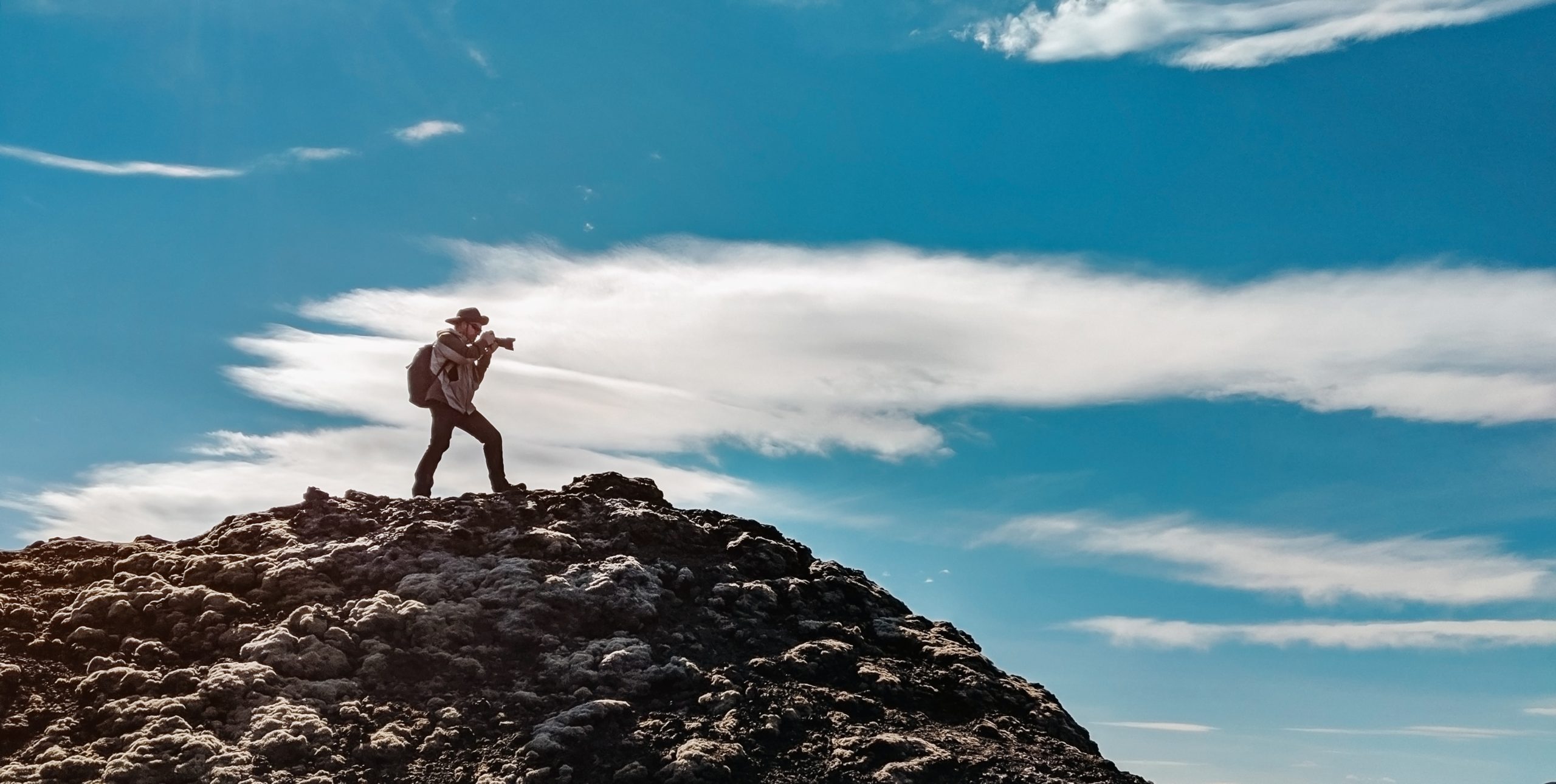
8. Look where you're going
This is a nighttime activity, and if you’re hunting in a great spot, you will likely have some impressive dark cover, making it harder to see where you’re walking. We covered ice earlier in our list, but what about terrain? If you’ve had a chance to wander around in the daytime, you may have noticed how uneven Icelandic ground can be.
Iceland’s biome is Arctic tundra, which means that while you may not run into many trees, you will find thick brush and other low-lying grasses that can obscure variation in terrain. In many places that would be manageable.
But in Iceland, that terrain is likely to contain lava fields and rock protrusions. The ground might look flat, but watch out for holes! Like many of the simplest safety tips, this seems like one that doesn’t need to be mentioned, so let’s stay on the path, and keep it that way.
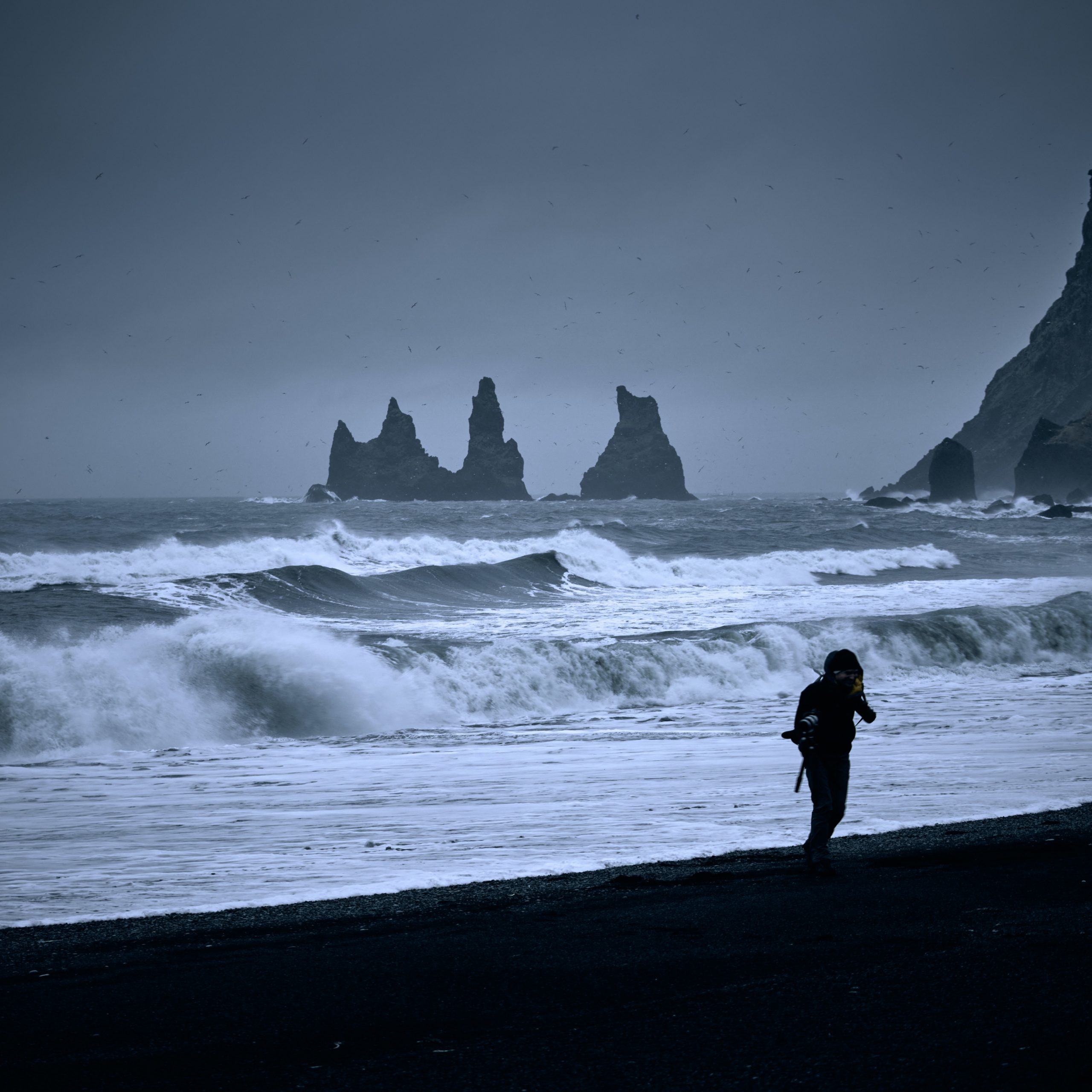
9. Beware the water's edge
Another terrain tip! (Are you starting to get the feeling that these might be linked to many avoidable accidents?) Water is a big part of Iceland’s terrain. Whether it’s the huge amount of precipitation that we get, to the frothing glacial rivers, the surrounding ocean, or the placid lakes and ponds of our inland areas.
Many of these bodies of water may look similar to others you’ve seen before, and they may be! But at least during these nighttime activities, they are best left alone. At the time of this writing, the ocean near Reykjavik was a whopping 3.1°C (37.58°F).
This temperature paired with strong currents and stormy winter weather is not safe for inexperienced swimming. There are very few places that one can swim in the ocean here, so you will not find beaches staffed with lifeguards, monitoring the waves.
A fall into one of these frigid bodies of water can be treacherous during the day, but at night it can be lethal. So while you’re keeping an eye out for ice, and looking for holes in the lava- try to keep a respectful distance from the water, and stick to hot pots.

10. Stay rested
The beautiful northern lights are only visible at night, which is usually when most of us sleep. If you’re visiting, you probably have some pretty packed days ahead of you. Sightseeing, activities, restaurants, maybe even some hiking.
It’s easy to forget to take a break when you’re hurrying to see all the things on your list. (Have you ever needed a vacation after your vacation? Tell me about it.) There’s stuff to do! Stuff to see! And tonight is a great night for auroras! It sneaks up on us.
But don’t forget to slow down and take a break, or a nap, before heading out for the night. Many visitors go from day trips to aurora hunts, and if you’re driving it can be a lot to handle.
Make sure to eat an early dinner, and take a small nap before you go, just to refresh. Being out in the elements is hard work, and sleepy night driving is a dangerous chance to take. Not to mention following all of these other tips!
Be careful with yourself. We want you to come back, for all the beautiful northern lights yet to come.
Next level Aurora Hunting: 5 wild places to watch the Northern Lights in Iceland
Looking to up the ante on your aurora hunt with a getaway to a rare location? Look no further.
Seeing the northern lights is phenomenal no matter where you are. But for some next level aurora hunting, we’ve reached deep into our own favorites for some rare spots that we think you’ll enjoy. Seeing these places at all is a big win, but aurora hunting in them? Unforgettable.
1. Grímsey: The Gateway to the Arctic
Grímsey is the one point in Iceland that actually reaches the Arctic Circle. Resting about 40 km. north of mainland Iceland, Grímsey straddles the actual Arctic Circle and is the northernmost inhabited land in Iceland. (There is a smaller island further north, but it is uninhabited and is predicted to soon be claimed by the sea.)
Getting to Grímsey is fairly straightforward. You can hop on the ferry for a 3 hour trip both ways, or catch a quick 25 minute flight from Akureyri Airport. Believe it or not, you can access this northern gem year round.
Home to only about 100 people, Grímsey is a popular destination for aurora hunting, birdwatching, history buffs and those that seek the rare and covetous Arctic Circle certificate! When in Grímsey, one can actually visit the border that denotes the current location of the Arctic Circle boundary.
This intersection is marked by a nearly 9 ton stone sphere called “Orbis et Globus.” This giant art piece is a monument that was made to mark the Arctic Circle boundary, and follow its movement. In fact, it’s round because they never intended this monument to be static- just as the Arctic Circle is not static.
At the time of this writing, the Arctic Circle is marked at 66.5 degrees northern latitude, but it is constantly moving further north of us. The circle is moving about 14-15 meters north every year, and will likely continue this journey for 10-20,000 more years.
At that time, it is expected that it will move south once again. Till then, we have the century stones on Grímsey to mark its passage. You can visit these three stones, that mark the past locations of the Arctic Circle border from the summer solstice in 1717, 1817, and, 1917.
Depending on how things go, Orbis et Globus may have to roll into the sea! Despite Grímsey’s diminutive size and small population, it is a place of thriving life and a phenomenal aurora hunting spot.
There are multiple options for lodging there, multiple historic locations to view, and many hiking paths where you will truly be alone with nature at the edge of the world. Out here it’s just you, the northern lights, and about 1 million estimated sea birds.
This close to the pole your ability to pick up low level solar activity increases, and of course you can’t complain about the quality of darkness out in the Arctic waters. Not to mention, the certificate!
There are multiple ways to acquire one of these rare documents, and for many, they are a trip highlight. You can secure yours by taking a Nordlandair/Air Iceland flight, or by purchasing one in the Gallerí Sól giftshop.
(According to the town of Akureyri’s webpage, Gallerí Sól is open Monday, Wednesday, and Friday during the summer months, which may not line up with many Aurora hunters. If you plan on taking the ferry, make sure to write or call ahead to pre-reserve your diploma by phone (+354) 4673190 / (+354) 4673156 or by email: gullsol@visir.is. Can’t leave without it!)
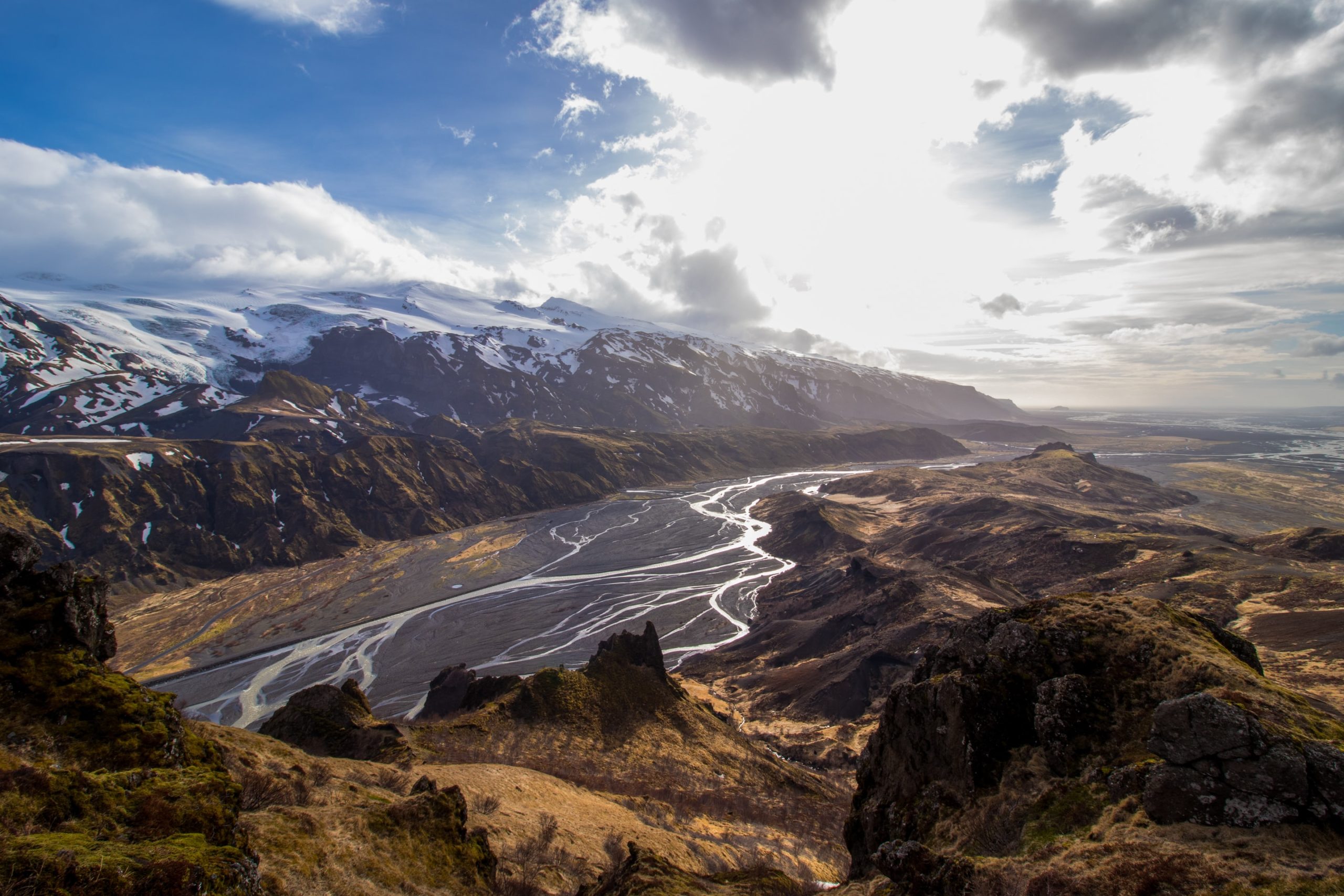
2. Þórsmörk/Thórsmörk: Valley of the God
In English, this place is The God’s Valley. Named for Thor, you don’t have to be here very long to see why this place is divine enough to be a deity’s backyard. Thórsmörk makes the list not only because it’s painfully gorgeous, but it is also not so easy to get to.
Nestled in the southern Icelandic highlands, this nature reserve is officially a trek. Though it doesn’t take too long to get there from the main ring road, it does require some F-road travel and depending on conditions, a couple of river crossings.
These are glacial rivers, and because of that, it can be hard to predict how deep, how turbulent, or how difficult a crossing will actually be at the time. Glacial rivers are affected by climate change, seismic and geothermal activity, and just weather in general, so this is a location that we recommend some help to access.
While it is perfectly legal to attempt this journey yourself, most rental insurance does not actually include water damage to the undercarriage of a vehicle, which is good to know before you take a 4×4 into the middle of a river for the first time.
Even the experts get stuck sometimes in their specially modified highland crawler trucks- so it’s a good thing to take seriously. Fortunately, there’s another way!
Thórsmörk is home to some cool mountaineer lodging and endless beautiful hiking trails, there are many different guides that can help ferry you into the god’s oasis.
These experiences range from private super jeep expeditions, all the way down to the Highland Bus, which is a specially altered bus meant to navigate river crossing and get you over Eyjafjallajökull’s still standing piles of fine ash.
If you’re able to make this journey in the winter, be ready with your cameras. There are some unbelievable vistas in this area, and some of them are quite manageable for the novice hiker.
Proceed with caution though, because colder months of the year bring additional navigation and footing challenges that should not be overlooked. These are the true highlands, and people aren’t kidding when they say it’s another planet.
Between the climate microcosms and the rapidly changing conditions, it is good to be extra mindful out here. Keep in mind that some of these pathways into the reserve may not receive extensive service in the height of winter, and so if you are aurora hunting then, it is recommended to go with a guide.
If you are visiting in the earlier or later halves of the aurora season, it may still be clement enough to venture out on your own, if you are an experienced outdoors person, or you’re hitching a ride on the Highland Bus.
Thórsmörk in the autumn months is colorful and covered in berries, and a great place to spend the night for a northern lights show like you would not believe. When you’re there, you know you are watching from Thor’s own theatre.
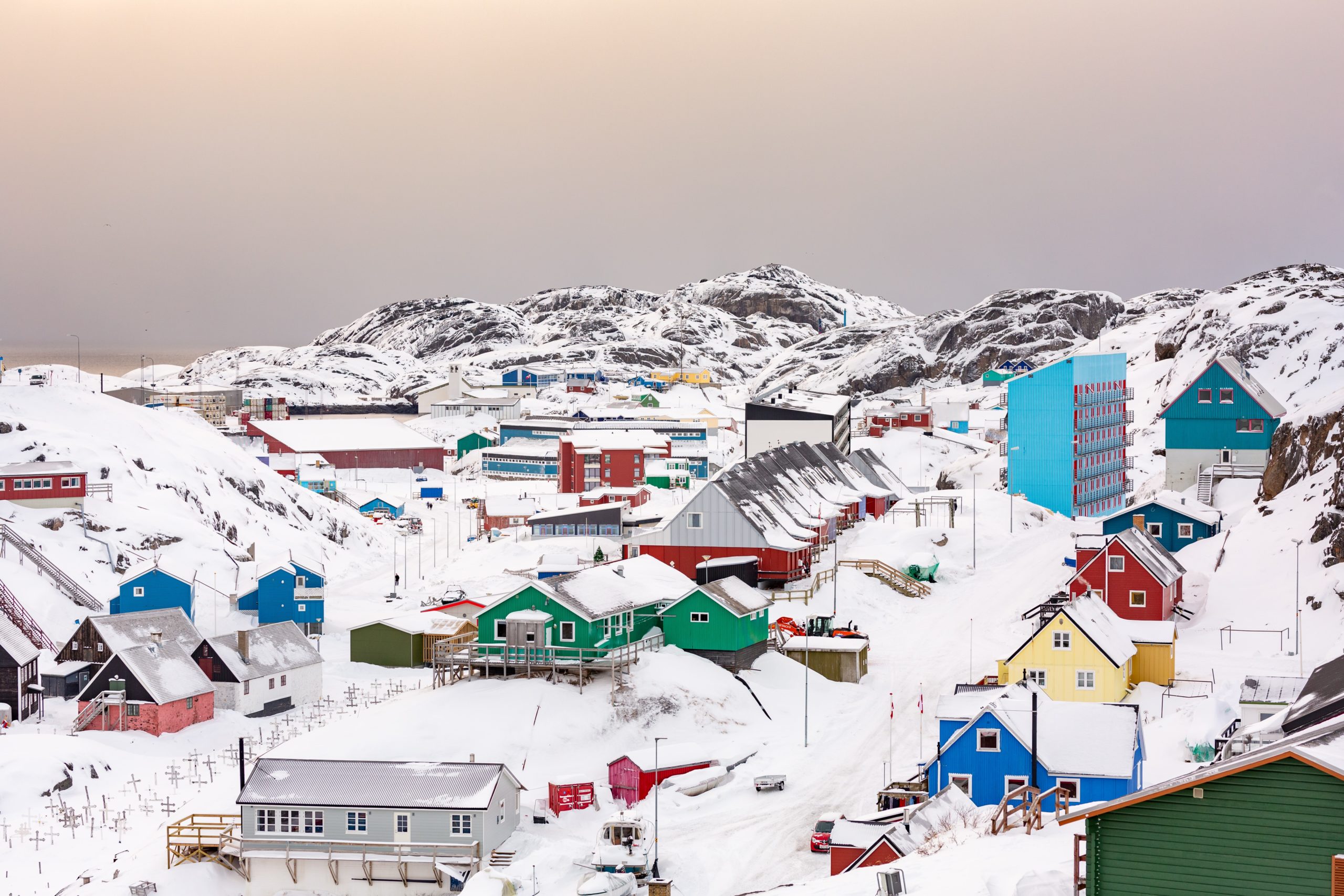
3. Greenland via Reykjavik or Akureyri
I know what you’re thinking! Greenland? But this isn’t a rare spot in Iceland? And you are correct. However, for the intrepid aurora hunter or day-tripper, it is good to know that the icy shores of Greenland, or Kalaallit Nunaat, are accessible from multiple city airports in Iceland.
You can catch a quick flight in Reykjavik’s domestic airport to the capital city of Nuuk, and it only takes about 3 hours and 20 minutes. These flights visit multiple locations in Greenland however, so if you’re looking for a longer stay you can visit Ittoqqortoormiit, Kulusuk, Narsarsuaq or Ilulissat.
Though this is another country, we had to include it on the list as a rare and magical aurora hunting dream spot- because it has not been possible in recent years to get many direct flights to this area outside of Iceland or Denmark.
Thanks to Greenland’s small population, remote towns, and low light pollution, this is a phenomenal place to chase the lights. This large landmass also boasts fairly clear skies most of the time and is large enough that you can move around to avoid some of the relentless low-pressure systems that are so populous in the high winter of the year.
There are many things to do while you wait, like fishing in the pristine ice fjords, dog sledding, hiking, climbing, and visiting one of the biggest ice caps in the area. But don’t stray too far from the towns- with their colorful houses and local delicacies, they are just as incredible and bright as the light show you’ve come to witness.
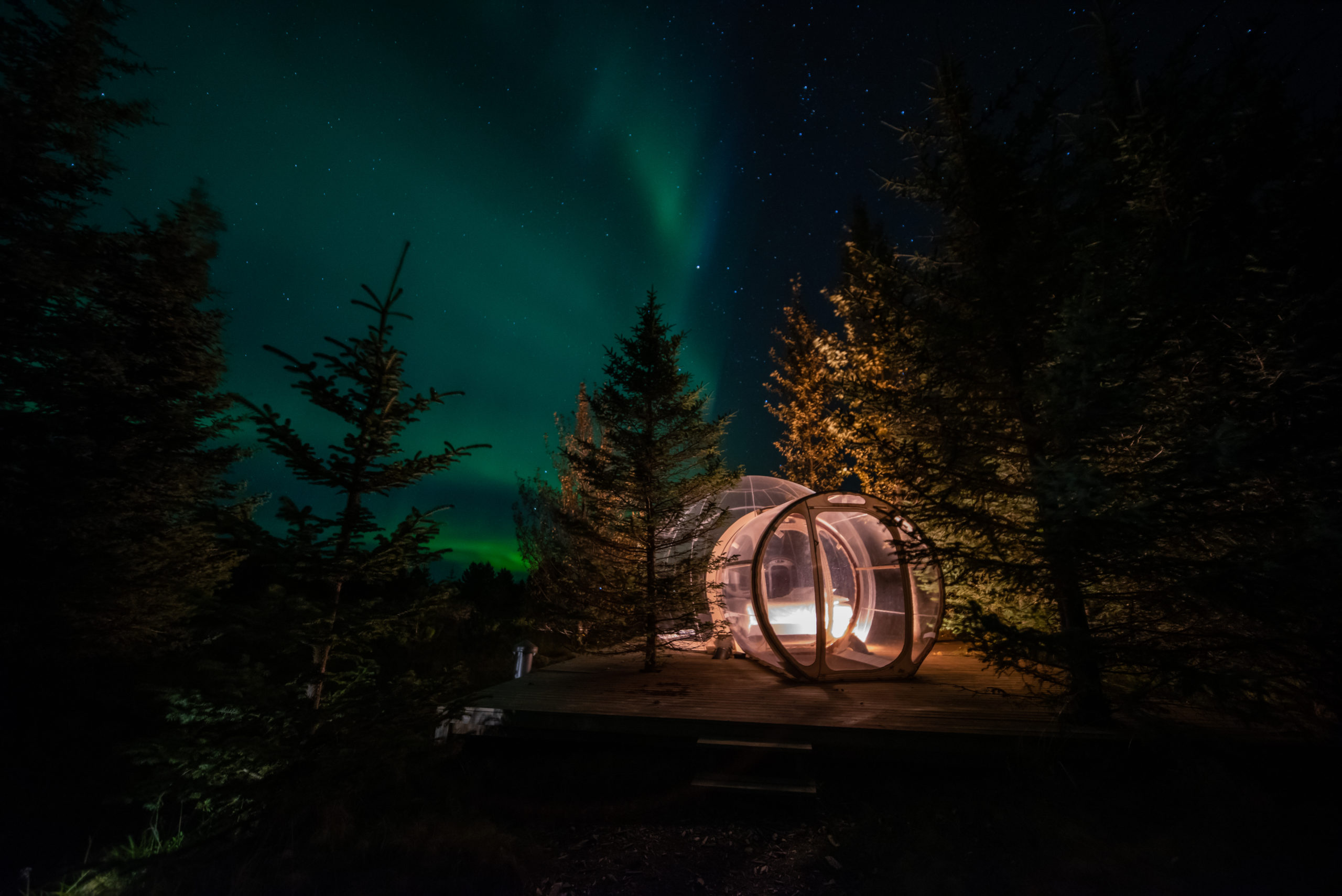
4. The Bubble Hotel of Iceland: Imagine if the only thing between you and the lights was a bubble?
Though rare, this spot might be easier for you to get to- with some help from their intrepid guides. The Bubble Hotel of Iceland is a surreal paradise tucked away into two different Icelandic forests.
These wholly transparent spheres are heated and nested into private groves so that you can melt into nature while wrapped in a luxurious down comforter. This might be our coziest location yet!
Typically when aurora hunting, you have to give it a rest when you go inside. Sometimes we miss prime aurora hours, or even a whole show when we head in to get a hot chocolate and thaw out.
But not here at the Bubbles. At the Bubbles, going inside never means missing the sky. You can lay outside for the whole night, and see everything around you from your 360-degree nest in the woods. It’s hard to beat!
If you plan on visiting the Bubbles, it is good to note that there are not many of them, and they book up months in advance. They exist in order to protect the woodlands they’re in, and provide an alternative revenue source to the farmers in the area so that they do not have to sell their lumber.
Protecting long-term growth in new forests is an important task, and so not only are the Bubbles a fun choice, they are a responsible one. They are located out in the country near the Golden Circle region, and the South Coast region, and upon booking, one of their local guides will collect you in Reykjavik and give you a chauffeured tour on the way to your destination.
They will also pick you back up the next day, and return you to town. From start to finish, a trip to the Bubbles is the ultimate luxury and a rare chance to turn off your brain and connect to the world around you. Not a bad state of mind for some aurora hunting.
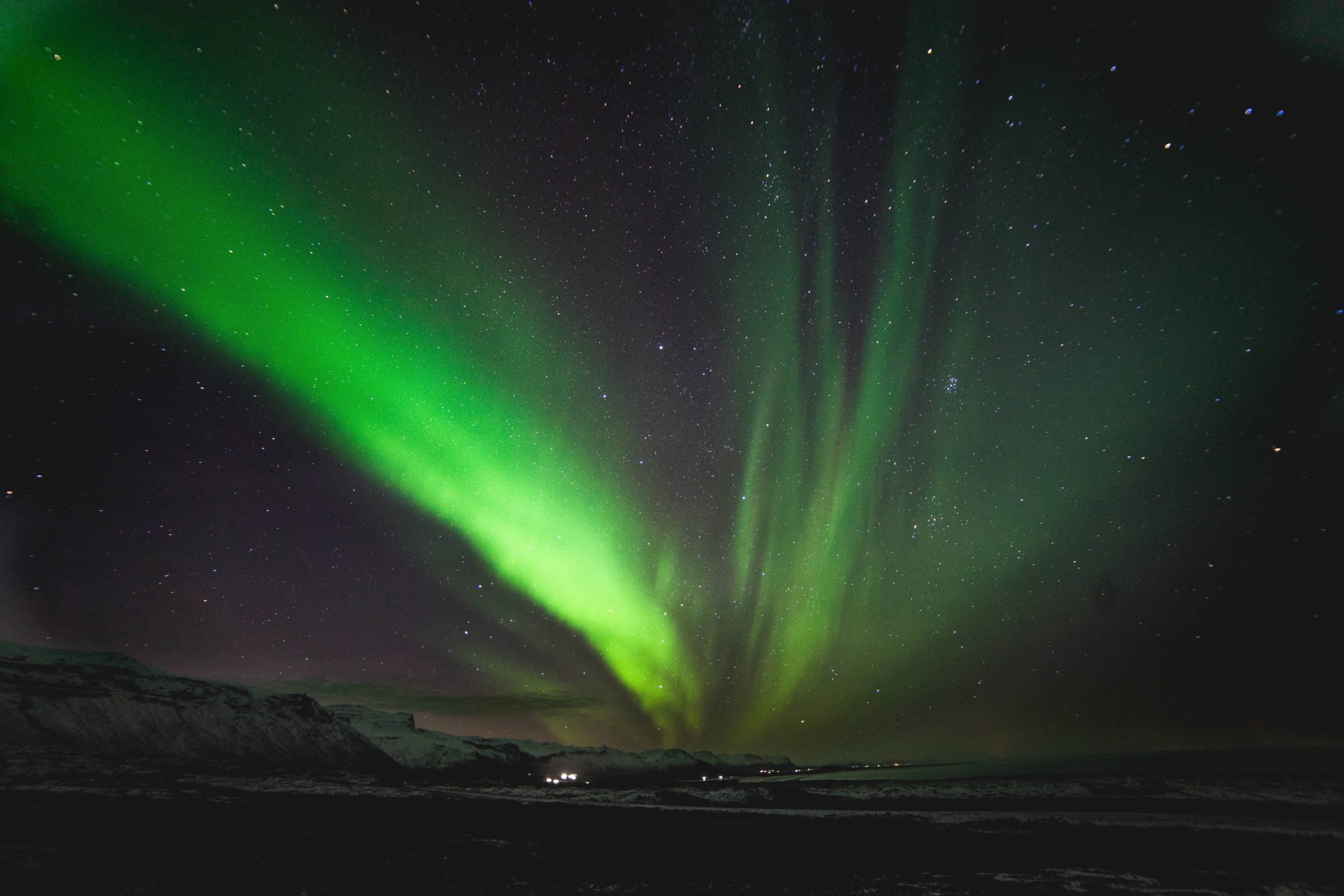
5. The Arctic Henge at the top of the world
Unless you’re already stationed up in the north, it may take you quite a while to get to this one. Sitting at 2 hours and 2 minutes drive from Húsavík, this monument is nearly the highest mainland point in Iceland.
Designed by Artist Haukur Halldórsson, the Arctic Henge is much like Stonehenge and is built as a reminder of figures from Norse mythology. The henge itself represents four dwarfs from the Prose Edda book who were tasked by Odin to hold up the sky.
It acts as a sundial and a calendar of sorts, reminding us of all of the dwarves that help to build this chronological map of the seasons. Right now the henge consists of four six meter tall gates and one ten meter high column, but it is still under construction.
The stones used to create it are massive, Set on a hill in the seaside town of Raufarhöfn, this is a historical place with an incredible spectrum of wildlife. If you don’t visit Grimsey, this is nearly as far north as you can get in Iceland.
The clarity in the northern climes and lack of light pollution is sublime, and few photos can rival a choice shot of the lights dancing among the henge. (Perhaps even a video punctuated with the wild cries of Arctic foxes darting in between? This is their turf, after all.)
Keep in mind when you visit that the henge is a holy place celebrating the Ásatrú belief. It may yet be under construction for some time, and so it may take a few visits to see everything that has been planned.
Though it is out of the way, don’t sleep on Raufarhöfn and its beautiful henge. Aurora hunting is a place of deep magic is not an opportunity to be missed.
Iceland northern lights season: the most wonderful time of the year
In Iceland northern lights season is a magical time. But when do they actually happen- and when’s the best time to come see them?
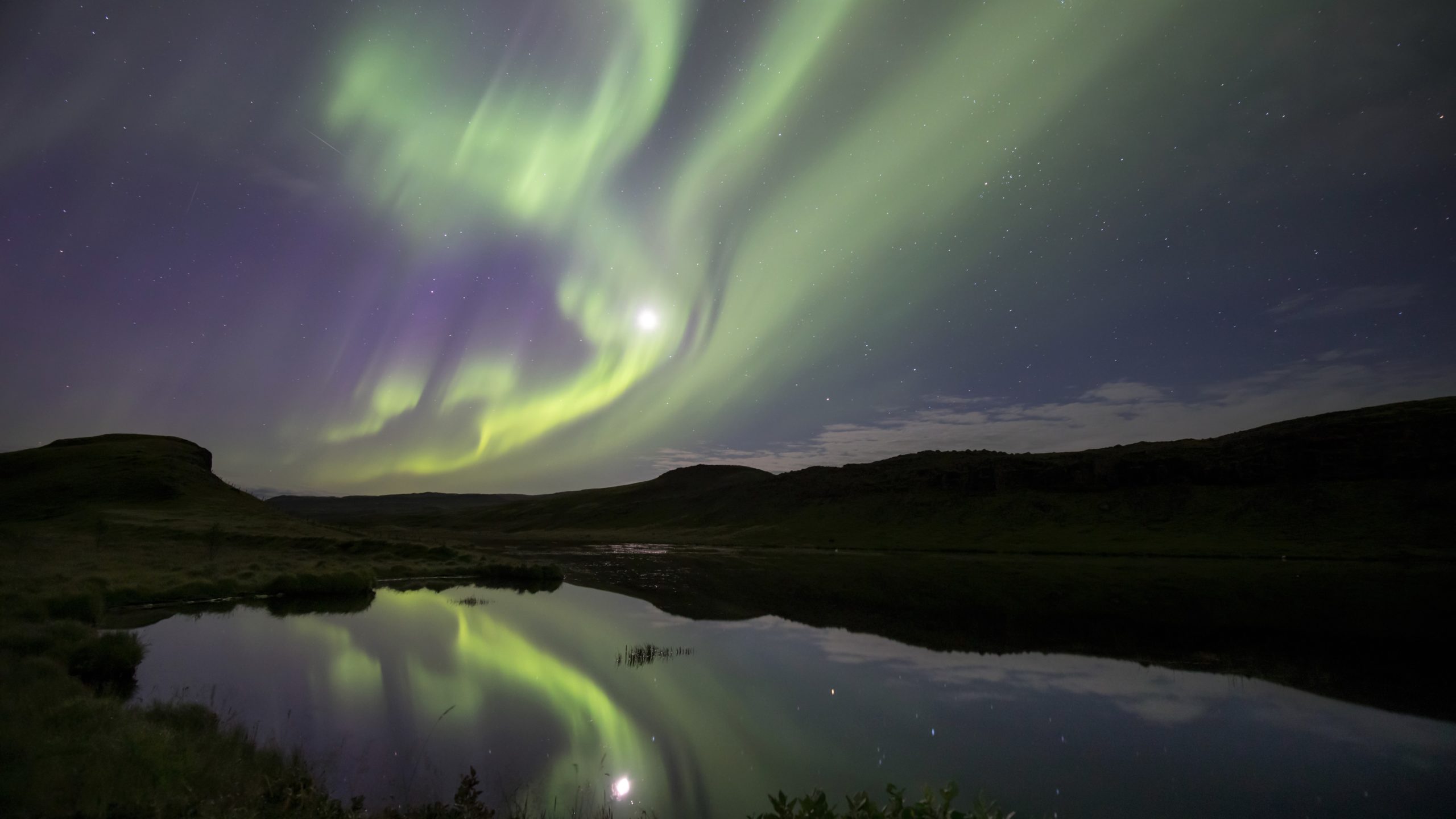
The two halves of the year
Most of us know about the four seasons and the special relationships that different places can have with them. There are dry seasons, seasons that bring great storms, and times when amazing blooms and colors transform the land. You’ve seen it in autumnal leaves, avenues of cherry blossoms, fields of fruit, and grasses that grow ten feet fall! Seasons were our clock before we had a better way to count the time- and here in Iceland that is truer than most.
If you’ve had the chance to visit Iceland, or any country in proximity to the poles, you may have already experienced the extreme patterns of light that I’m referencing. Tales of the ethereal “Midnight Sun”, or endless days of darkness that see no light. The closer to either pole you get, the more severe this pattern becomes.
Because of the tilt in the Earth’s axis, the polar regions of the Earth find themselves much closer to the sun in summer, and much further away during winter. As you move closer to the equator, many countries further down feel the echoes of these shifts in light as well. Some, even further north than Iceland, feel it even more.
You can see what the annual sun graph of Reykjavik looks like here. It’s a great way to get an idea of what the light will be like when you visit. Try it for your home, or a city far away from you. It’s amazing to see how differently we experience the world- even at the same time.
The Icelandic settlers of old had to balance their survival with this harsh cycle- and created a calendar to help them manage their livestock, their crops, and their morale. This old calendar still has bearing on society today, and its holidays are still beloved as reminders of the natural progression of this place, in a way that the modern global calendar sometimes is not.
This calendar was based heavily around solstices and equinoxes of the year, and with its 12 months it splits the year into two halves. These halves were the summer/nattleysi, or lack of night, and the winter/skammdegi days, or short days. All of these were checkpoints in the arc of time, and were visible and even ways to mark its passage in a place where it often felt as if there were only two seasons to measure.
It was a difficult life for the settlers, and surviving the winter was a cause for great celebration. You can tell when the local populace felt the breaking of winter at the end of April- because that is traditionally when Iceland marks the first day of summer, or sumardagurinn fyrsti. This is a national holiday, and it is celebrated on the first Thursday after April 18th. This is a day of festivals and merriment, even though it may not seem very summer-like in temperature or appearance. But for Icelanders, this day marks the end of the long dark, and the beginning of the lengthening of days.
At one time, it meant the increased likelihood of survival, and days where one could work, craft or read without the obstacle of losing the light.
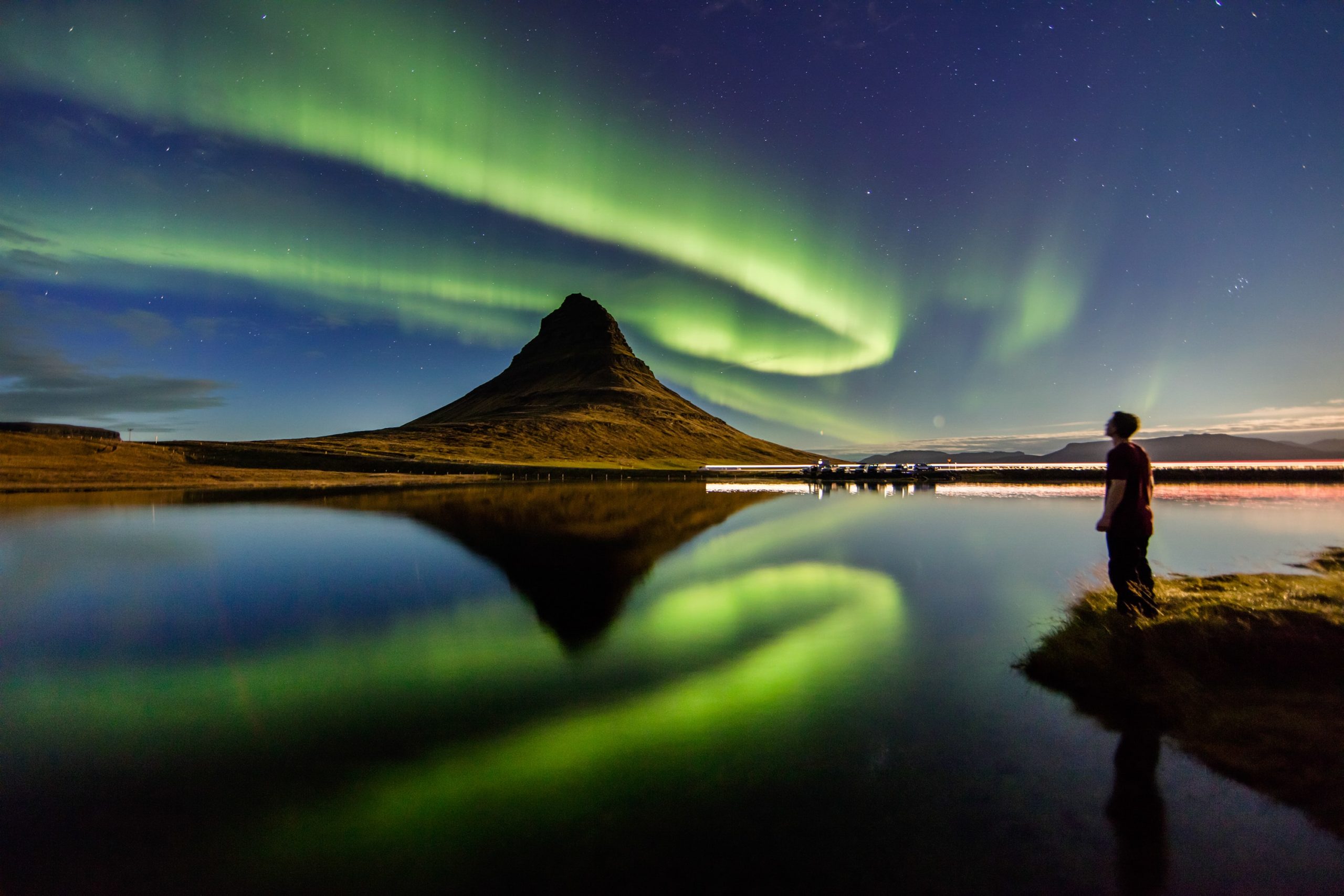
So where do the northern lights come in?
We know a little bit now about Iceland’s age-old relationship with seasonal time, light cycles, and surviving the harsh winters. But where do the northern lights come into all of that?
To give you the short version- the northern lights themselves can happen at any time.
They happen so far above our planet in space, that temperature, season, and time don’t mean too much when it comes to their arrival and creation. The first thing to realize about the aurora, is that it is a function of space weather before all else- but seeing it does require a little bit of cooperation from our own Earth weather, as well.
When an aurora is born, it is due to the sun releasing a solar storm into outer space. You can read more about that process here. We can track these storms to an extent because of the orbital patterns of the sun and the reappearance of sunspots, which more regularly release these strong systems. However, our ability to measure and predict space weather is still very much a developing science, and can be imperfect at times.
Despite all of that, the sun is releasing this energy all the time. Depending on the solar cycle and factors facing the travel of solar storms, this activity can find its way to us at any time of year, in any season. This means that it’s entirely possible for solar activity to arrive in our atmosphere in the middle of summer, or during the brightest point of day.
The difficulty here is actually with us. Auroral light is a visually delicate natural phenomenon, despite its volatile origins. To see it with the naked eye, we require darkness in order to pick up the low lumen light that it creates.
(An additional difficulty here lies with us as a species, because of how we perceive color visually in dark places. Because we are not nocturnal, our eyes are not designed to process color as well at nighttime, and so it’s already challenging for us as creatures to look at this type of light.)
Which is where we circle all the way back around to our first point- and Iceland’s dramatic dark and light seasons.
If the aurora arrives in the high point of summer when we experience only civil twilight, we wouldn’t be able to see it. It would technically be there, dancing and possibly displaying incredible colors- but we would only be able to see that from space at best. (And sometimes, NASA sends us a video of it!)
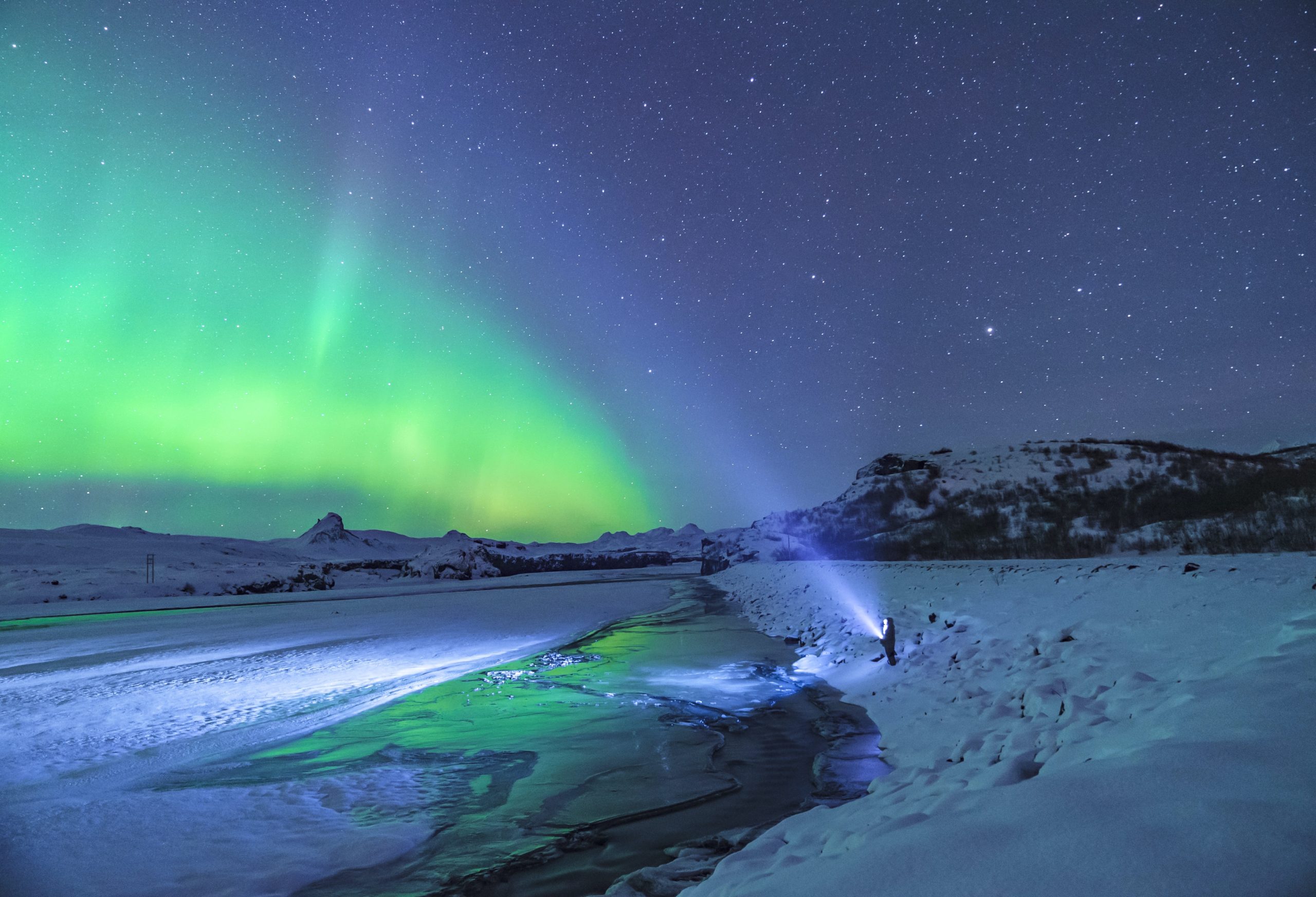
The same situation happens for us during the daytime, even in the winter months. Even though we only have a few actual hours of daylight, we still require the solid darkness of night to bring forth the best canvas for auroral glow.
Can we start our hunt earlier in the midwinter? Definitely! We can start heading out as early as 7 or 8pm on some nights, a thing that would be rather difficult to do in the earlier days of the auroral season. But we do still require that deep darkness of nighttime.
In Midsummer and Midwinter, we start to lose or gain minutes of sunlight. This means that once we hit Midsummer, we begin the ever-increasing trek to winter darkness. We don’t always notice this right away, but typically once we reach August, it becomes dark enough to witness the spectacle of northern lights.
For me, the earliest I have seen them was at the end of the first week of August. This is only the beginning though, and so I would likely wait until a bit later in the season (late September at the earliest), to plan a trip.
This darkness builds every day until mid-winter when we start to gain the sunlight back. This typically means that we can witness auroral light until the very beginning of April, though March is the popular cut-off. (Similar to August, April would be the very tail end of the possible season- and would be a risky time to book an aurora hunt.
Though, there are quite a few intrepid photographers that catch them that late in the year, with lots of practice, lots of experience, and a tiny bit of luck. It is, of course, Lady Aurora herself waving goodbye for the year- she loves a dramatic exit.)
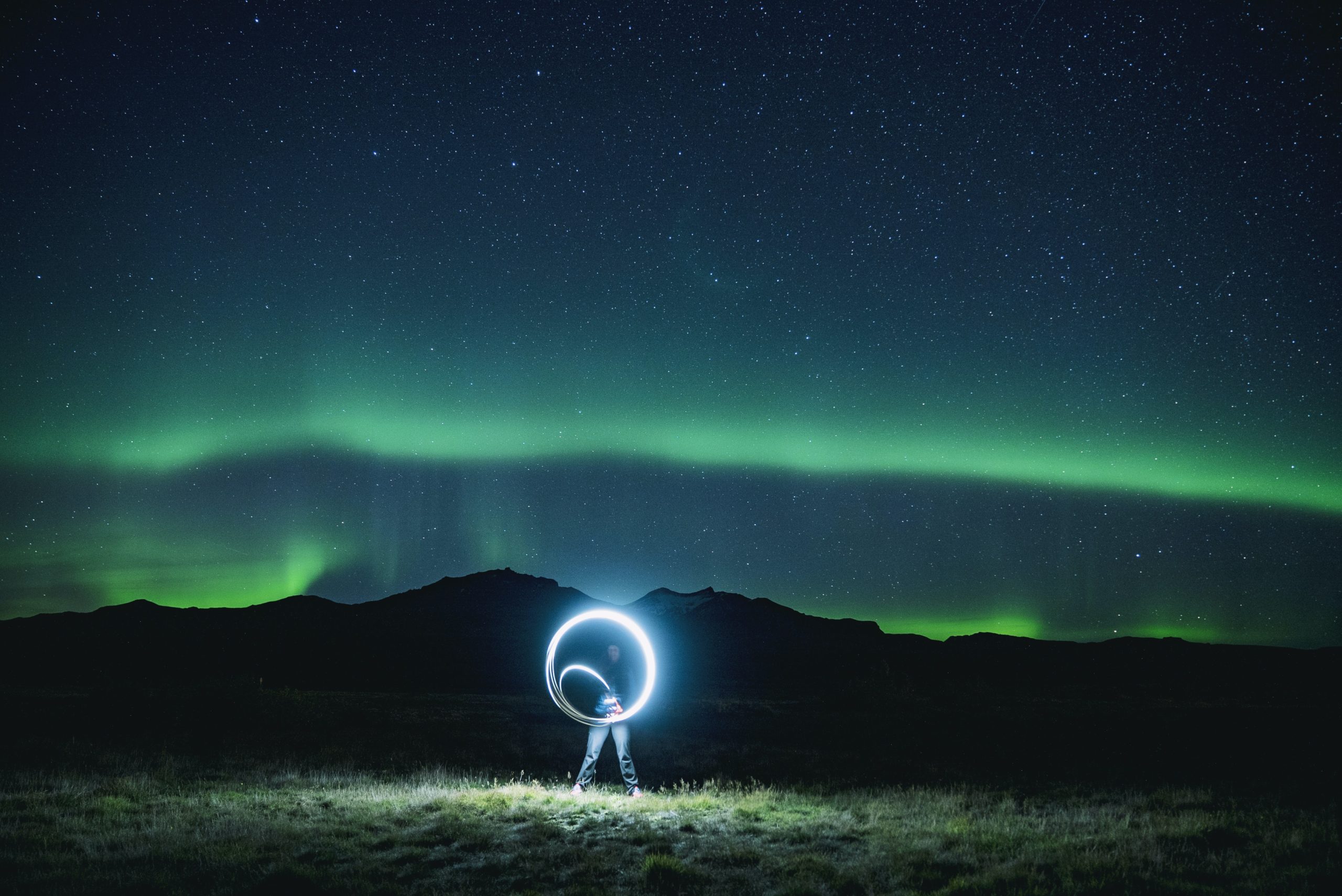
Some materials do talk about the ‘daytime aurora’, and this is not an incorrect statement. There are many places further north than Iceland (like Svalbard for example), that have an even more extreme sun graph than we do. (Though you can visit Siglufjörður, where they celebrate the first day that they see direct sunlight again.)
Places like this may not actually see the sun at all for quite some time- and maintain the ability to see northern lights for a longer period of time because of that. In addition to the extended dark hours during the day- they are also closer to the pole. Proximity to the pole can mean that they catch more of those low-level auroras that don’t travel very far out.
So don’t fret! The truth of the matter is that you have a whole half of the year to hunt for auroras in Iceland, as our forebears might say. (And for the other half of the year, you have puffins, endless lupine fields, and all the sun you can handle!)
But what about the weather?
You know about the Midnight Sun, the space weather that makes auroras, and the half of the year when we finally get enough darkness to see them. But what about Earth weather?
Earth weather does not interact with the northern lights, because it exists in the troposphere layer of our lower atmosphere. This is where most of the clouds in our atmosphere are located. It is sometimes said that extreme weather (things like polar vortexes and massive storms) can occur as far up as the stratosphere, but this is not entirely accurate. The stratosphere is particularly dry, and lacks the moisture to regularly create clouds, like the more humid troposphere.
To give you an idea of scale, these layers of the atmosphere combined are nearly 50 kilometres above the Earth. And still, it’s not high enough for auroras.
Auroral activity occurs in the ionosphere, a section of the atmosphere that overlaps the mesosphere and the thermosphere. This is an area of the atmosphere where a great deal of electrons and ionized atoms and molecules occur, thus housing a key part of the collision recipe that makes the visible aurora.
This means that myths about temperature and storms don’t necessarily hold true, and they don’t inhibit aurora activity. They do however get in the way of our viewing path.

The view from Earth
Since we are watching from the Earth’s surface, anything that does happen in our weather system can get right in between us and the aurora. This means that sometimes the aurora forecast is great, and shows high solar activity and an incoming show- but if it’s cloudy, it’s as if someone pulled the curtains. The show goes on of course, but anyone under the cloud cover is missing it.
This is why the aurora forecast usually comes in two halves. The space weather or solar activity half (where we use the 0-8 Kp scale), and the Earth weather, or cloud map.
Much of what we are discerning before a night out hunting, is can we see the sky, where is it the clearest, is that clarity window moving due to wind- and if we can find a good spot to watch from, is there any solar activity?
Iceland is known for its rowdy winter weather, and depending on where you are in the country, you may find yourself exposed to some interesting micro climates and storms. The good news is, is that if you have the ability to travel and move around, sometimes it’s just as simple as driving over to the next cloudless spot. (And not forgetting the snacks, of course. It’s definitely a process some nights.)
Ready for the hunt: A Recap
You know it all, now! (Who am I kidding, nailing down space weather is a learning journey that never ends. At least not in our lifetime!)
Let’s do a onceover to make sure we’ve got our northern lights trip toolkit together.
First, we have to book a trip in the right half of the year. This means we’re headed to Iceland some time between September and March at best. (If you want to catch the tail end of August or the early start of April, you can try it, but it would not be a recommended time frame for northern lights.)
However, it is always good to remember that the northern lights are a natural phenomenon, so it is best to plan a trip first for the experience of visiting the place. Iceland is a wonder all on its own, and the northern lights are just one of its many gifts.
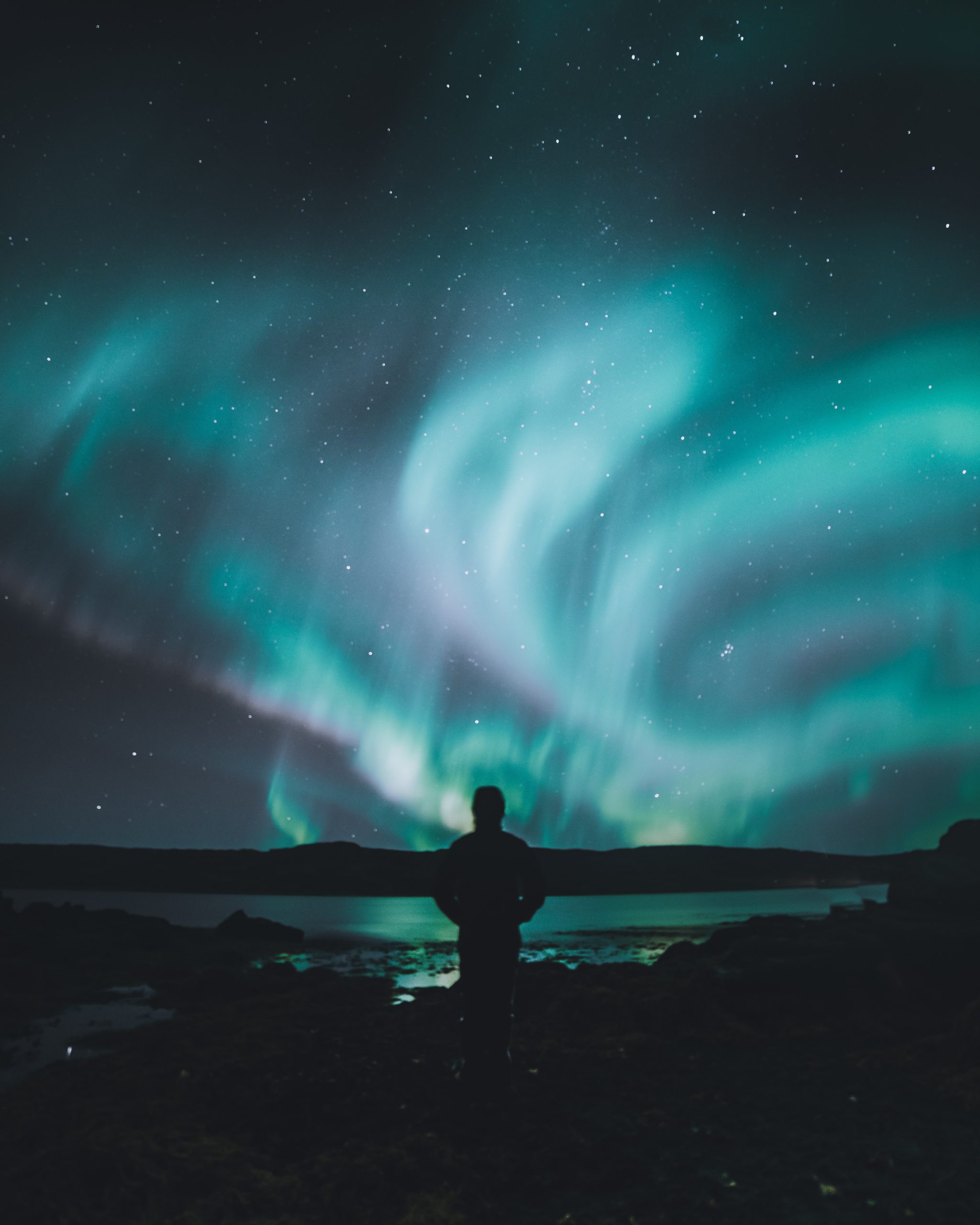
Assembling your Aurora Toolkit
Once you’ve booked your trip for the ‘aurora half’ of the year, you’ve got to remember all of the pieces that have to line up in order for a successful hunt.
These are things like making sure you’re out at night (not at 3:00 pm, even if you could swear it feels like midnight- which it kind of does in December-), making sure you’re in a clear area or an area that will become cloudless or ‘cloud light’ by nighttime, and of course, having a small check on if there’s any solar activity that evening.
It also helps to make sure you’re not in an area of extreme light pollution. Iceland is not populated by huge cities, so we do fairly well on this front, and it doesn’t typically take long to get out of the city and into some real nighttime. However, if you find yourself city-bound at any point, try looking for a spot that takes you out of the direct light and gives you a bit of a break on the eyes.
Remembering that the Aurora Forecast is not the last word!
It’s good to remember that many of these things are variable and imperfect, so it is not always necessary to plan by extremes- unless there is very inclement weather or a safety concern. (Those types of alerts always come first. Can’t enjoy the lights if you’re frozen.)
What I mean by this, is that forecasts are infallible. Not because they are in any way bad, but because weather is a volatile force that occasionally evades even the best of us.
This means that the cloud radar can be off or slow, and the Kp number may not be accurate. It is possible for forecasts to gauge the speed of a solar storm incorrectly, as there are many factors that can add to that figuring. It’ll probably be a few years before we nail down space weather, but I can guarantee that there are a lot of brilliant people working on it.
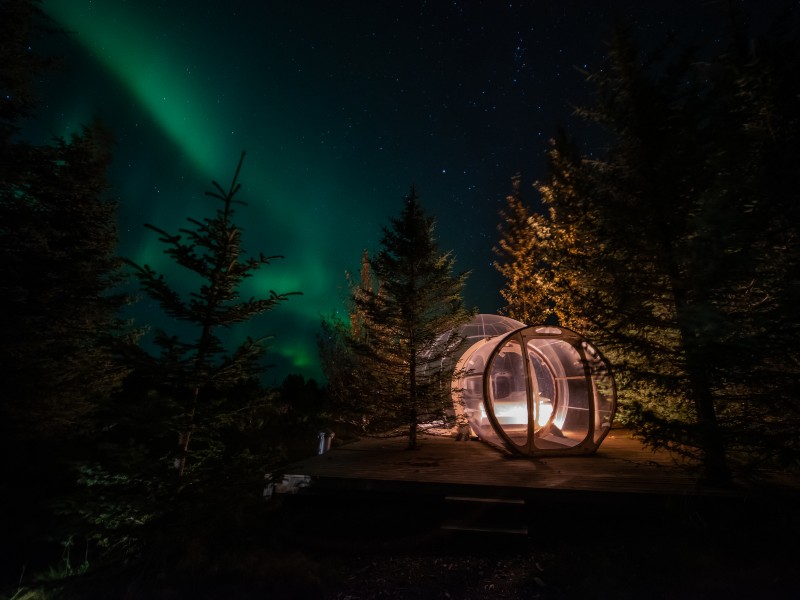
When the numbers don't add up, still look up!
This can mean that some nights, an aurora can occur on a Kp 0 evening. It can also mean that an exceptional evening (like a fabled Kp 8!), can disappoint us. This can happen for many reasons- which sometimes remain unknown to us. Sometimes powerful activity reaches so far that we end up in the middle of it instead, similar to being in the eye of a storm.
Sometimes it’s because we didn’t move very much on our hunt, and so we were only viewing one slice of the sky. It can happen that people see an aurora in one place, but a few kilometers over, nothing! Northern lights are like snowflakes in this way, and no two occurrences are alike. Forecasts are a great tool to have in your kit, and it can be good to cross reference a few good ones.
The TL;DR: Every aurora is a gift
Learning to decipher all of the different forecasting tools can be complex, but like many other information sources, being able to read a few different ones can sometimes give you a more comprehensive idea of what may be going on.
Sometimes, it can be that an aurora did happen, but it was a visually weak occurrence, and you did not realize you were seeing it. If you have only seen photographs of northern lights, it can be hard to recognize a low level manifestation- as they are not quite as neon and extreme as a photograph can be.
Nighttime photography uses processes like slow shutter speeds, aperture, and ISO to perceive light in darkness, in ways that our eyes cannot. This does not mean that auroras cannot be bright, or that all photos are photoshopped- but it does mean that the average occurrence will most likely not match the once-in-a-lifetime shot that you saw on a postcard.
Sometimes all of the factors are completely lined up, but there’s a weather warning, and it just isn’t a great night to chance it. The weather conditions can get very serious here very quickly, and are not worth risking.
All together, this sounds like a massive feat. The thing to take away is, that if you have a window of clarity in the sky, and you’re here in the magical half of the year that gives us this other kind of light, have a look. Once you know how much work it takes for the universe to produce one of these things, it feels miraculous that they happen at the frequency that they do.
Know that you may have to keep an eye out for longer than you’d expect sometimes, and you may not always be successful. But as every local knows, it is always worth looking up. They often happen when you least expect them. (..And it can also be nice to have a few drinks and a hot pot to soak in. You know. Or a transparent Bubble to wrap up in. Just saying.)
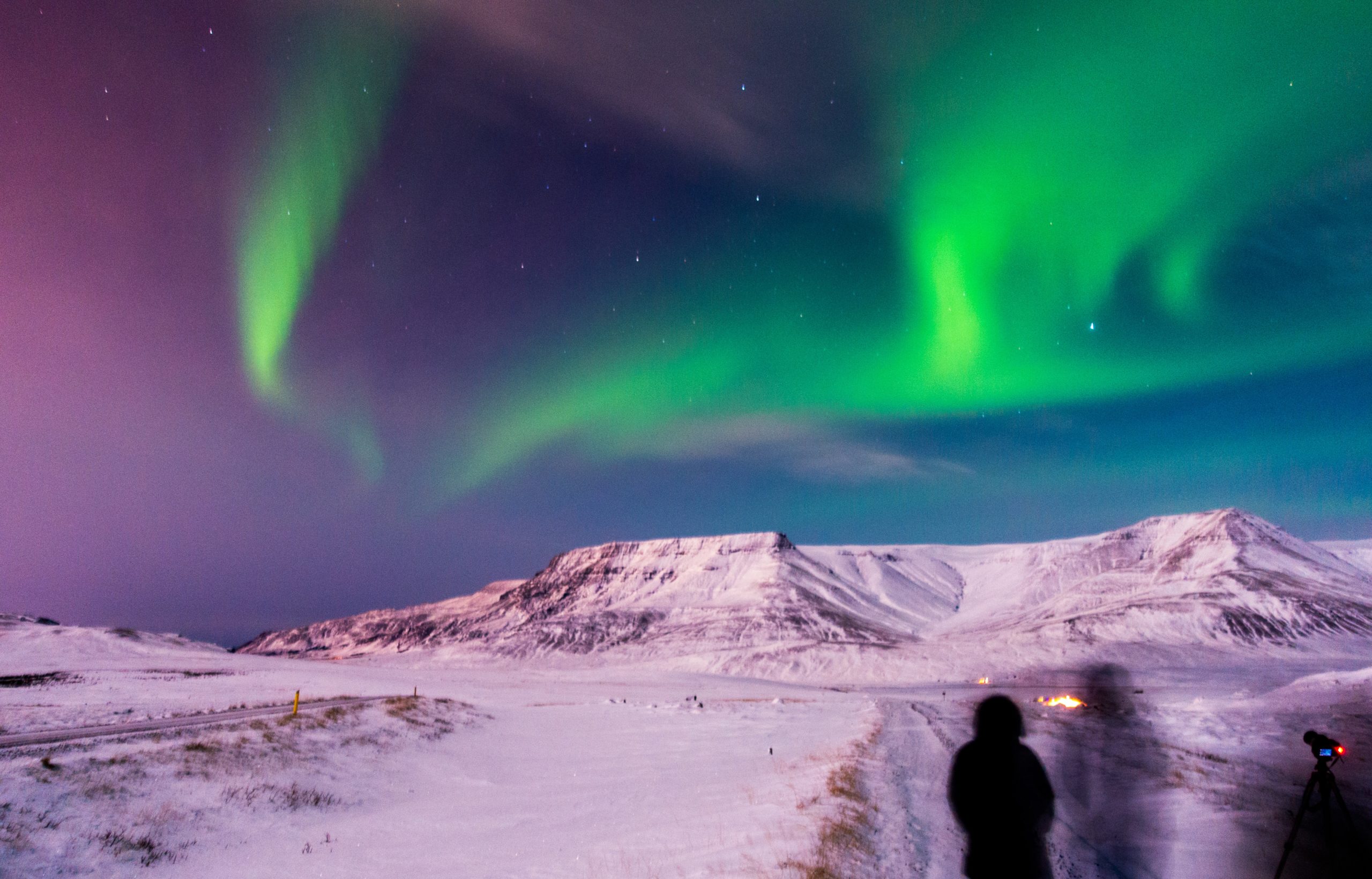
Tour to see the magic in Iceland
Northern Lights from John Welsh on Vimeo.
NORTHERN LIGHTS ICELAND TOUR
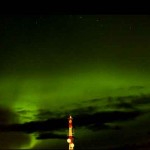 Northern Lights Iceland Tour: To plan a trip to Iceland to see the Northern lights will probably be one of the best trips you have decided to go on. Northern light evening tours in Iceland are one option in fullfilling your dream to experience the Northern lights. If the sky is clear and the temperature is below zero, these wonderful lights will give you an amazing and colourful show.
Northern Lights Iceland Tour: To plan a trip to Iceland to see the Northern lights will probably be one of the best trips you have decided to go on. Northern light evening tours in Iceland are one option in fullfilling your dream to experience the Northern lights. If the sky is clear and the temperature is below zero, these wonderful lights will give you an amazing and colourful show.
NORTHERN LIGHTS ICELAND TOUR – BEST TIME
The best time to visit Iceland to see the Northern lights is from October to April. Tours are offered during winter so it is easy to book one. It is predicted that the lights will be at their brightest level in 2012 so do not miss out of the opportunity to see this wonder of nature at its best. Northern lights Iceland tour is something that can be a great experience.
NORTHERN LIGHTS ICELAND TOURS – WHEN AND HOW TO BOOK
The Northern lights in Iceland are magical and it is possible to see them in Reykjavík but they are even more clearer away from the city lights. Therefore, Northern lights Iceland tours will help you experience this wonder of nature and give you the time of your life. It is easy to book and if you need any help planning your Northern lights trip, we are happy to help you find the tour that suits your needs. Just send us an email and we will reply as soon as possible so you will get a great Northern Lights Iceland tour.

